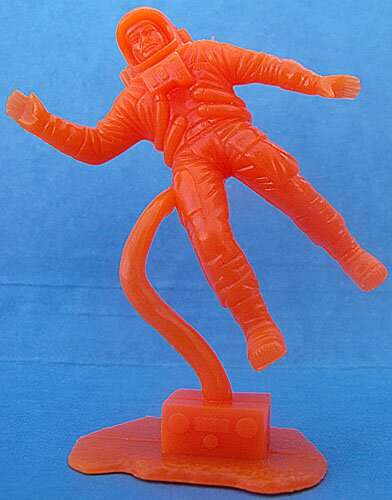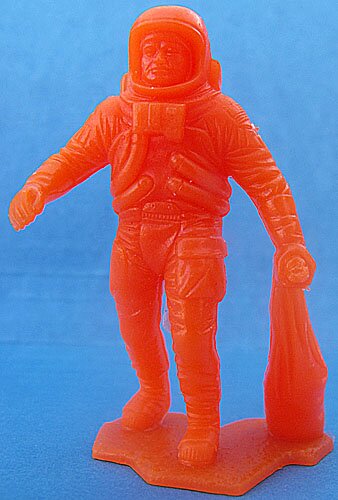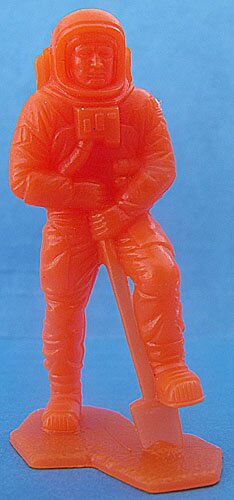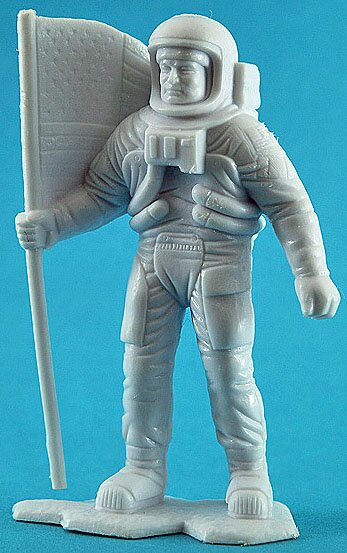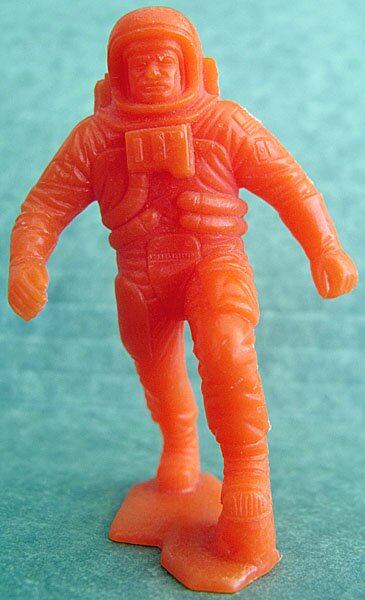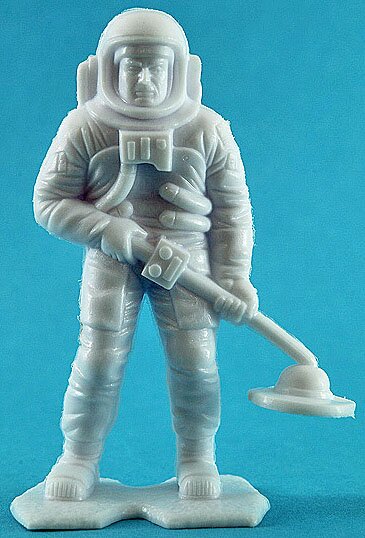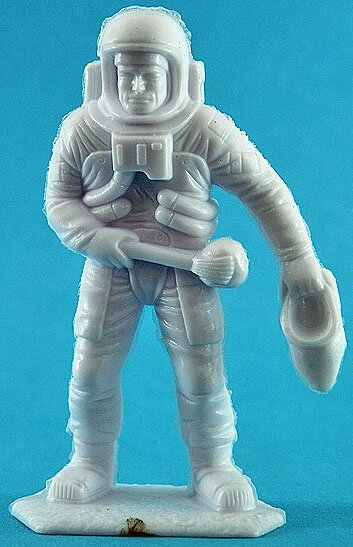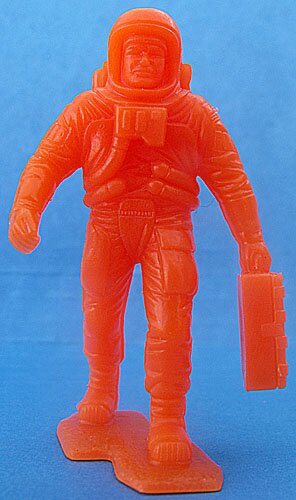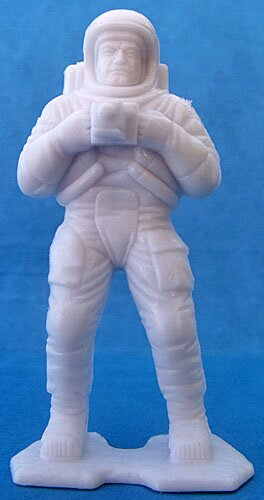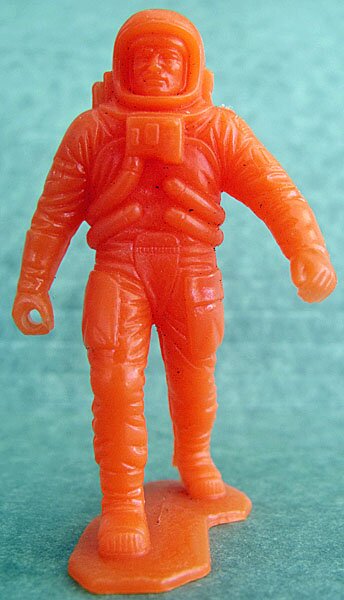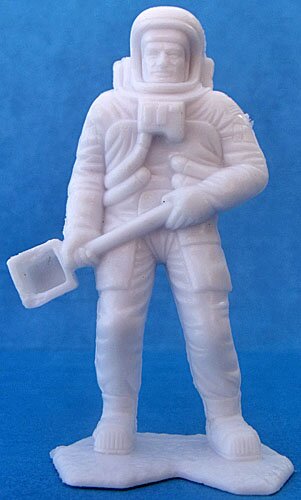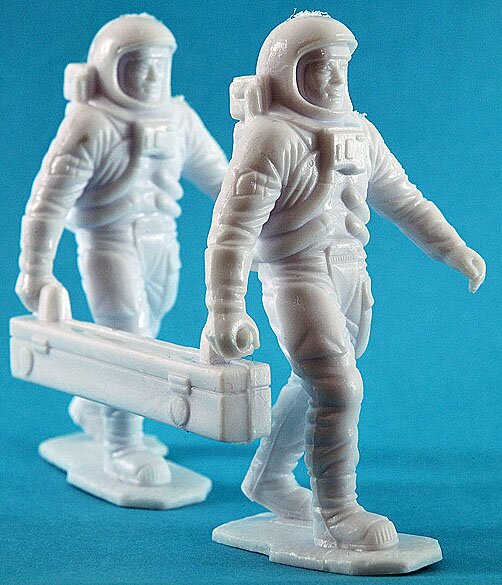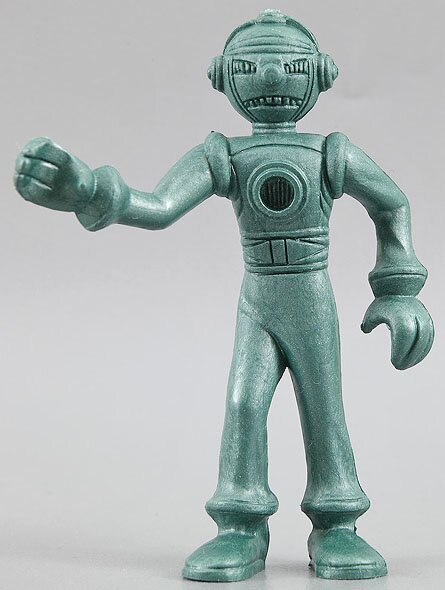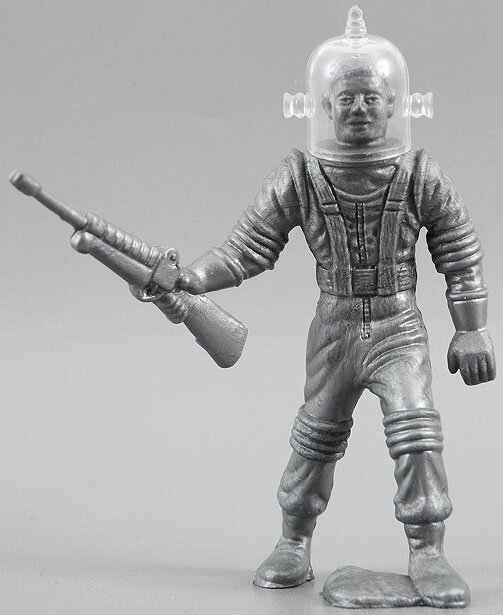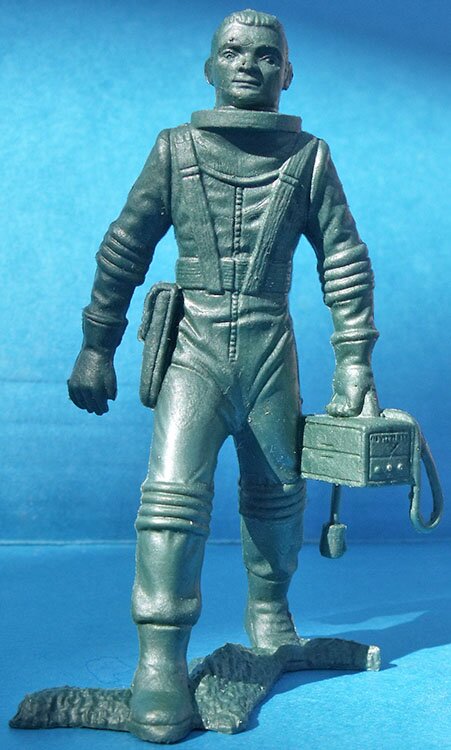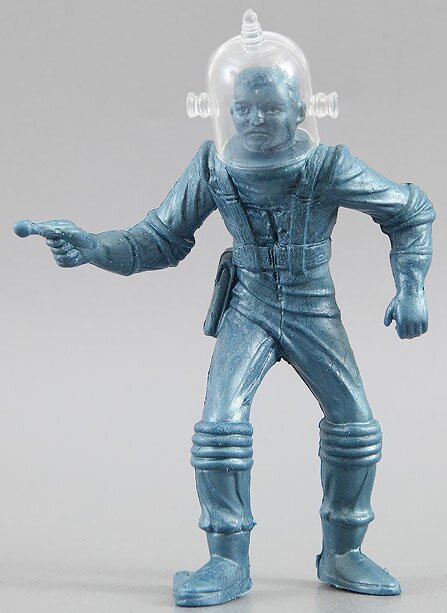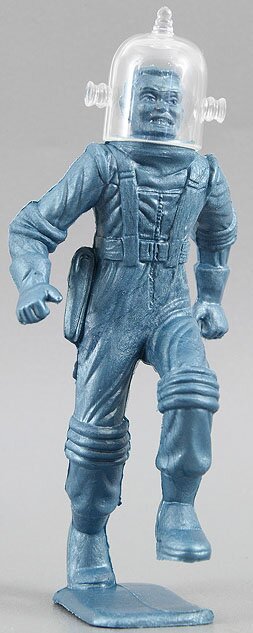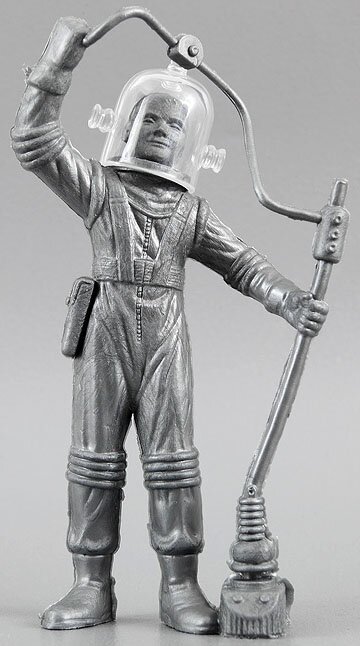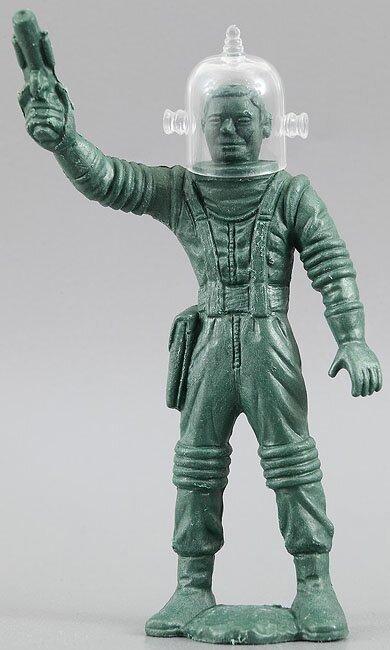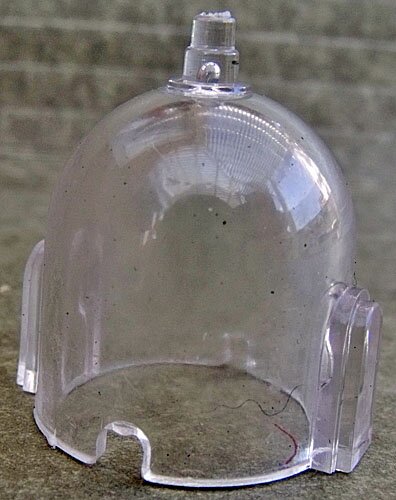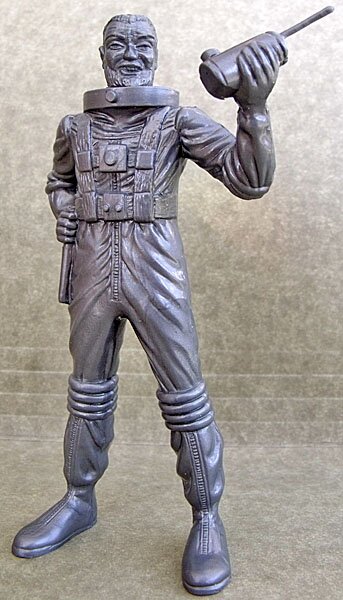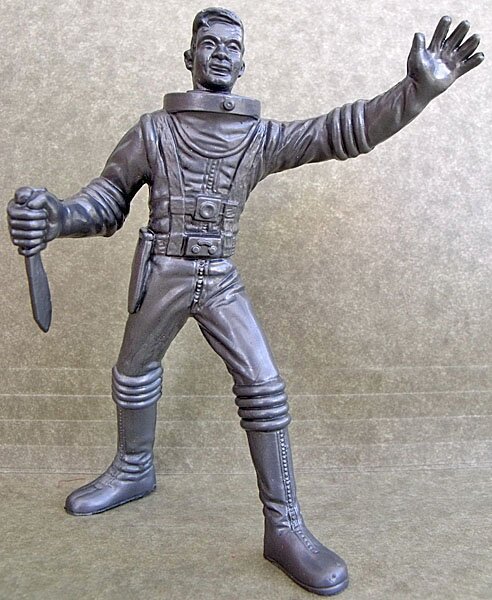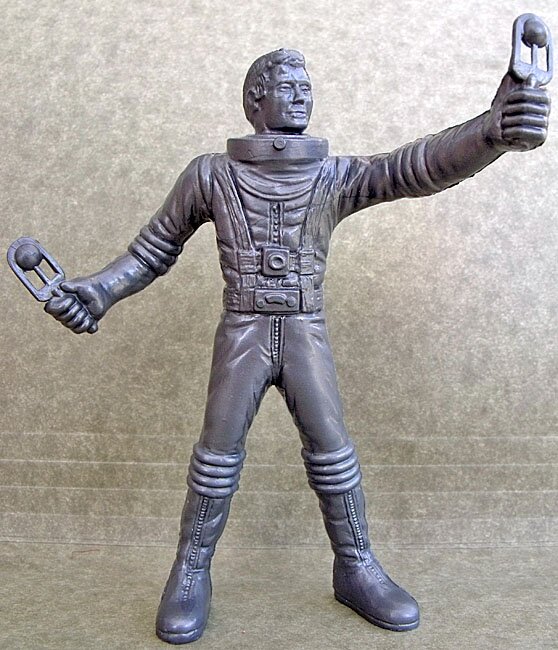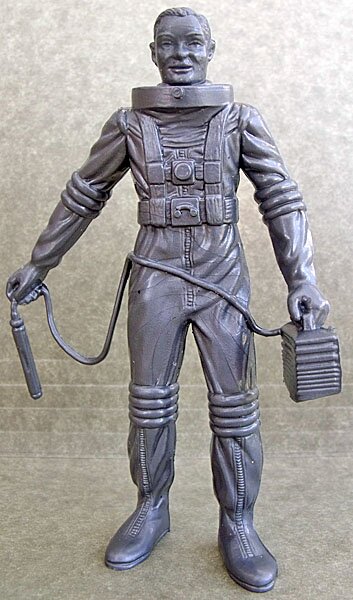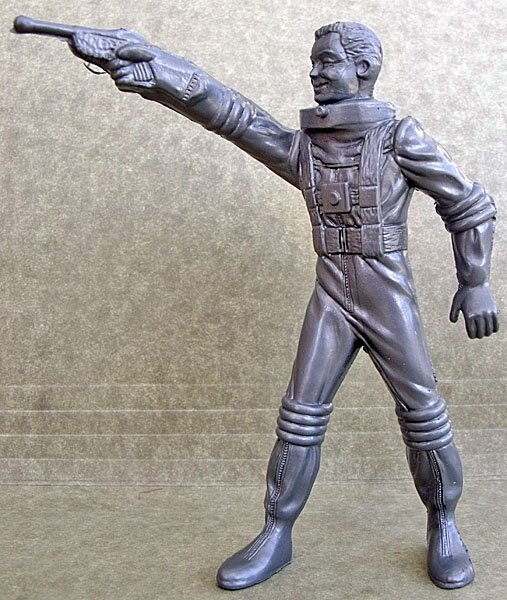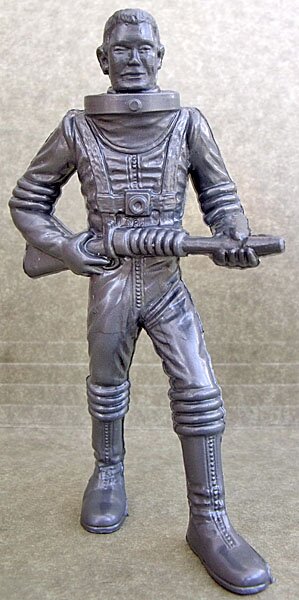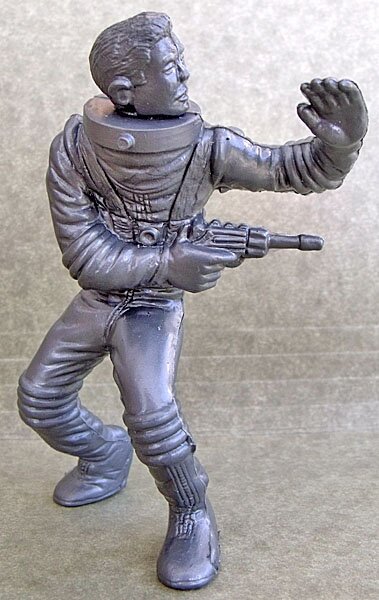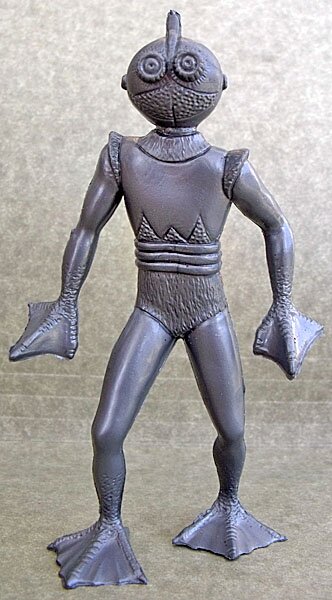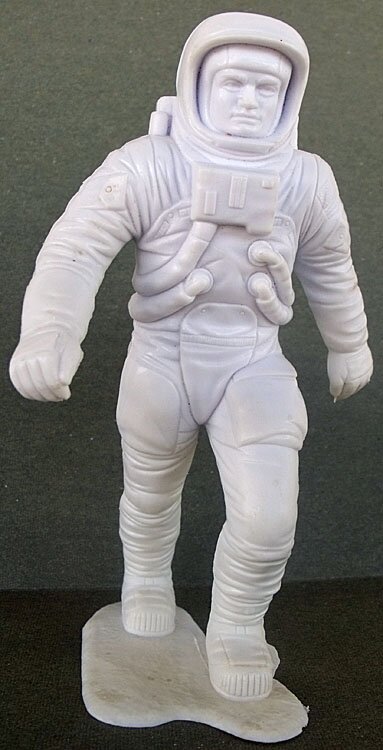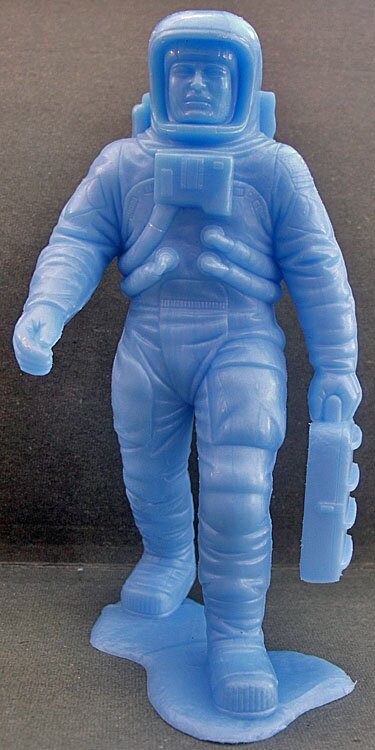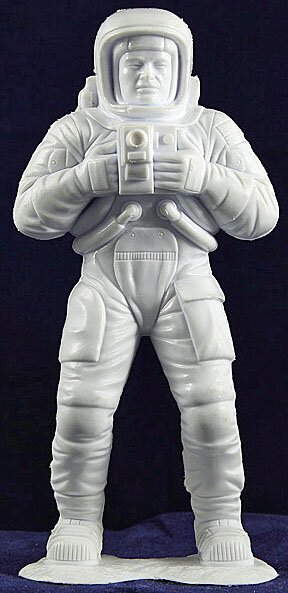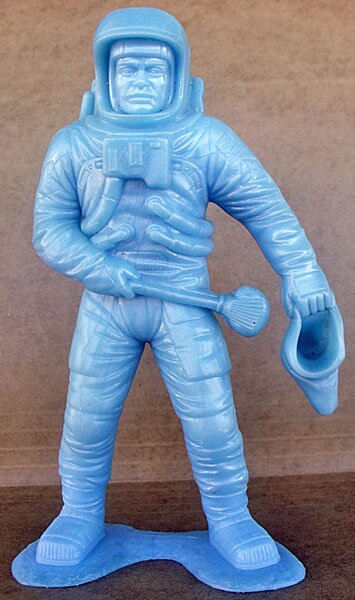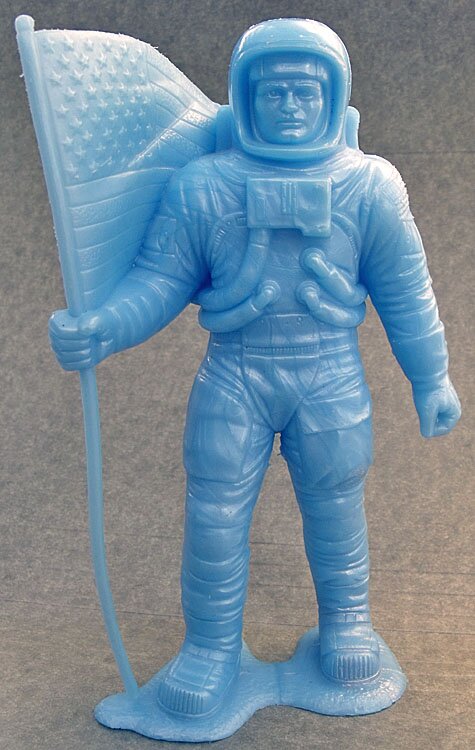|
An Inventory of Marx Playset Figures and Accessories Manufactured from 1951 to 1979
Appendix S-1 - Space Exploration Figures
|
Contents of this web site may not be reproduced or duplicated for use on the Internet or for commercial purposes without permission by Eric Johns.
This web site was created in late 2007, providing information about Marx wild west playset figures on a single web page. It now consists of about 30 web pages, with information on figures, structures, terrain pieces, and small accessories from playsets in many different themes. It also has indexes for Playset Magazine and PFPC magazine. I will continue to update these pages as I obtain more information and photos. If you have anything to add to these pages or suggestions to make them better, please e-mail me at info@marxwildwest.com. I will be glad to attribute contributions to you. And if you have questions or comments, I am always glad to hear from you!
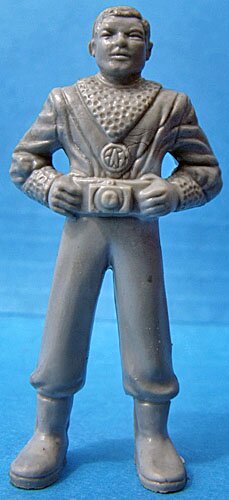 Table of Contents
(click on name to move to section)
|
| Early 45mm Space Figures: |
| Tom Corbett Cadets |
| Space Patrol Astronauts and Aliens |
| Rex Marx Astronauts and Aliens |
| Cape Canaveral/Kennedy Ground Crew: |
| Air Force Figures |
| Scientists and Technicians |
| Moon Base Astronauts |
| Space Capsule Astronaut |
| Mystery Space Ship Astronauts and Aliens |
| Apollo Astronauts |
| 3-Inch Space Astronauts and Aliens |
| 4-Inch Space Astronauts and Aliens |
| 6-Inch Apollo Figures |
| Back to Main Table of Contents |
| Most figures on this page are shown in approximately proper proportion when compared to other figures. Larger items and items in photos credited to others may not be. |
In the years following World War II, Americans turned their focus from the long and costly war to their back-to-normal lives of chasing the American dream, which largely involved work, school, and summer vacations. However, they still looked for some excitement in their daily lives, and this they found at least partially in increasing news stories and Hollywood movies of alien sightings, UFOs, and travel through space and time.
In 1950, two fantasy-based television programs featuring space exploration were introduced: Space Patrol and Tom Corbett, Space Cadet. Taking advantage of this space craze, Louis Marx obtained licensing rights with both shows and in 1952 expanded his new playset line with sets modeled on both of them. The company also created sets with its own space title, Rex Mars. The space sets quickly became best sellers, and Marx continued to create new space playsets right up to its end, 27 years later.
Marx space playset production can be summarized as follows:
| Early sets: Tom Corbett, Space Patrol, Rex Mars, and Captain Space | 1952 to 1957 |
| Project Mercury Missile Base | 1958 to 1959 |
| Cape Canaveral/Cape Kennedy | 1958 to 1968 |
| Operation Moon Base | 1962 |
| Mystery Space Ship | 1962 |
| Giant Martin Landing | 1972 |
| Galaxy Command | 1979 |
I was lucky enough to have a Tom Corbett Training Academy Playset when I was in the fourth grade. With the rockets and flying saucers and Tom Corbett himself, I had a great time with it. Sorry to say that I am not one of those who held onto his playsets into adulthood, but I do have the 8mm movie that my parents took the Christmas that I got it. Marx space sets were -- and still are -- just lots of fun!
As with other pages on this web site, I must attribute much of the information presented here to the former Plastic Figure and Playset Collector magazine (PFPC), the current Playset Magazine, Geppert's Guide to to Non-Metallic Toy Soldiers of the U.S., and various other similar publications. For the space area, however, I must point out one other source, the book Blast Off: Rockets, Robots, Ray Guns, and Rarities from the Golden Age of Space Toys!. Written by Mark Young, Steve Duin, and Mark Richardson, it is undoubtedly the best publication on toy space figures. The book's chapter on Tom Corbett and other space heroes of the 1950s includes a treasure trove of photos of Marx space figures and playsets.
| Early 45mm Space Figures |
Marx created three approximately 45mm figure groups for its early space playsets. Based on terminology that collectors use today, these were a Tom Corbett group, a Space Patrol group, and a Rex Mars group. While character figures were created for the two television program sets, sets commonly had figures from more than one of the three groups, sometimes all three. These early sets also included near identical accessories: a tin litho headquarters building, tin litho compound gate and fencing, space rockets, flying saucers, and a variety of small accessories. The primary difference among the sets was simply the name on the playset's box and on the miniature space compound's gate and headquarters building.
Probably due to licensing fees, Tom Corbett sets were produced only in 1952 and 1953, and Space Patrol was done only in 1952. The generic Rex Mars sets were produced through 1955, including Rex Mars Planet Patrol and Rex Mars Space Port. The company produced another generic playset, Captain Space Solar Port, in 1953 and 1954, but contents again were similar to other sets.
The figures for all three goups were first manufactured in the soft, rubber-like vinyl that Marx used in its early playsets. They were eventually produced in the soft plastic that Marx adopted as its figure material in the mid-1950s. While commonly called 45mm scale, they are actually slightly bigger. Some collectors refer to them as 50mm. Figures were made initially without bases, but bases were later added to some. Initially made in gray, blue, tan, and a pale orange, they were made in a few other colors later, including yellow and a bright red-orange.
Marx did not name any of the figures as specific characters in the television shows. However, several of the figures are commonly identified as specific characters by collectors. As explained below, some very obviously are, and others may well be. There is also a good deal of instances where figures can be posed to interact, some of it clearly intended by Marx and some not so clear. Some of these possibilities, again, are noted below.
Besides playsets, the figures were also sold in bagged figure groups and even individually. According to PFPC, some were also made for use as premiums in food packages. Bagged and premium figures were often made in colors not used for figures in playsets.
Tom Corbett Space Cadets
PL-468
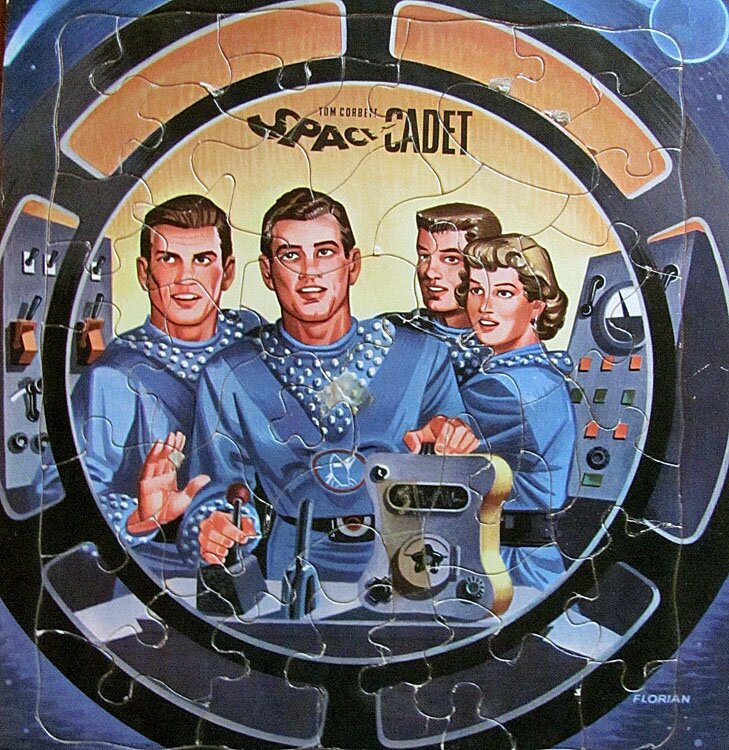 The Tom Corbett figure group included 17 poses, 15 earthlings and two aliens. They were initially manufactured for playsets in gray vinyl and later in much more hard to find blue, yellow, and brown orange. They also came in a gray soft plastic in the company's Captain Space set in 1957.
The Tom Corbett figure group included 17 poses, 15 earthlings and two aliens. They were initially manufactured for playsets in gray vinyl and later in much more hard to find blue, yellow, and brown orange. They also came in a gray soft plastic in the company's Captain Space set in 1957.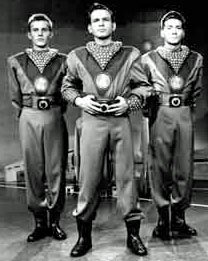 Although not identified on the figure, Pose 1 below is almost certainly a character figure of Tom Corbett. I must admit that I am not familiar with the cast of characters in the Tom Corbett television show, but veteran collector Josh Petrie has informed me that the fighting figures (Poses 14 and 15) are probably intended to be Roger Manning and Astro, who were always going at each other on the show. That could make Pose #10 Tom (if posed as in the interaction photos at the end of this section), because he was the one who always broke up their spats.
Although not identified on the figure, Pose 1 below is almost certainly a character figure of Tom Corbett. I must admit that I am not familiar with the cast of characters in the Tom Corbett television show, but veteran collector Josh Petrie has informed me that the fighting figures (Poses 14 and 15) are probably intended to be Roger Manning and Astro, who were always going at each other on the show. That could make Pose #10 Tom (if posed as in the interaction photos at the end of this section), because he was the one who always broke up their spats.Josh also notes that Pose #2 must be Dr. Joan Dale, who was the only female on the program, while Pose #6 is likely intended to be Commander Arkwright and Pose #7 Captain Strong.
The two aliens included in this group are also included in one or both of the other two 45mm groups. They are two of six aliens Marx included in its 45mm playsets. This group of six were Marx' only aliens for its space sets, except for its small scale Mystery Space Ship set. The aliens are shown together in the Rex Marx section later on this page.
If one studies the figure poses carefully, he or she will realize that several of the figures can be posed to interact with other figures or with playset accessories, perhaps more than any other Marx figure group. Pose 4, for example, fits perfectly into the seat of the set's space car (see space accessories page). Pose 5 sits at the small accessory control console, and Pose 9 is climbing the accessory ladder. The two fighting cadets, of course, go together.
The cadet with his arms in the air (Pose 11) is not meant to be surrendering to the aliens, according to PFPC Issue 29 (despite the photo below, submitted by collector Bob Spreitzer), but instead is intended to be used behind the small telescope accessory piece, perhaps a surveying instrument (as shown in another photo below). On the other hand, again, Josh Petrie has pointed out to me other possible interactions for that figure and for others. For example, he notes that Marx documentation indicates that one of the spacemen is supposed to be wrestlng with an alien from Mercury. Josh believes that the most logical figure would be that same Pose 11, and the Mercurian -- based on pictures in Tom Corbett comics -- which is the Pose #16 alien. Josh pointed out the large base on Pose 11 to me and believes that it is intended to keep the figure balanced as he holds something overhead. The positioning with the Mercurian alien shown at the bottom of the photos below seems to be a possibility. The only problem with this, though, is that the alien's foot and hand seem to me clearly positioned for him to be on the ground as shown in the photo of Pose 16.
There is a brief article on figure interaction by Michael Poko in PFPC 29, which includes the Marx document stating "man from Mercury, wrestling.". Michael suggests that the Mercurian might be wrestling the cadet with his left arm extended (Pose 15), but the documentation states that the two cadets are fighting one another, not an alien. Unfortunately, it does not specify which cadet the alien is wrestling with. I would suggest perhaps the alien should be "wrestling" with Pose 13 (again, see poses at the bottom of this section), where he can sit in the stance that is most natural to the position of his bent hand and foot. These poses obviously go well together, so perhaps the term "wrestling" was used somewhat loosely.
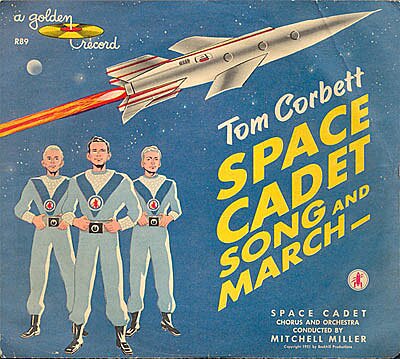 |
 |
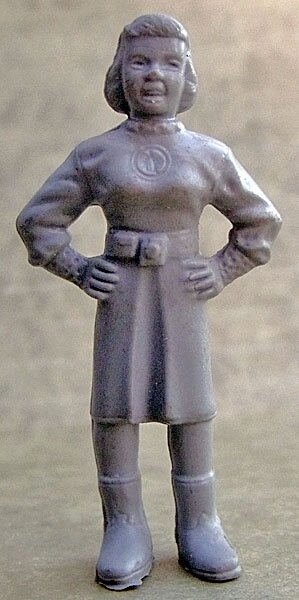 |
| 1. Tom Corbett | 2. Female, hands on hips |
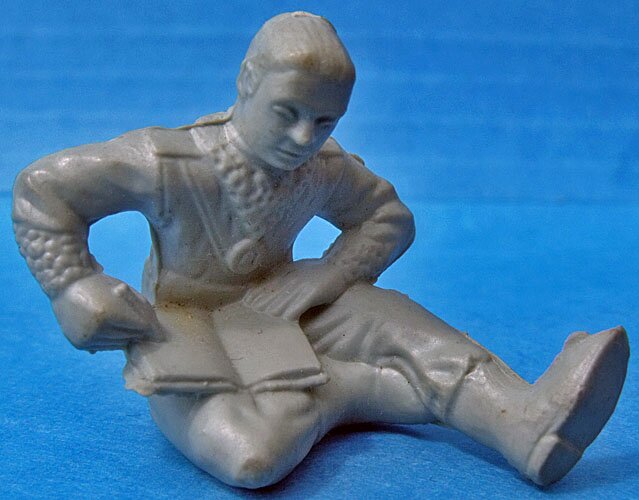 |
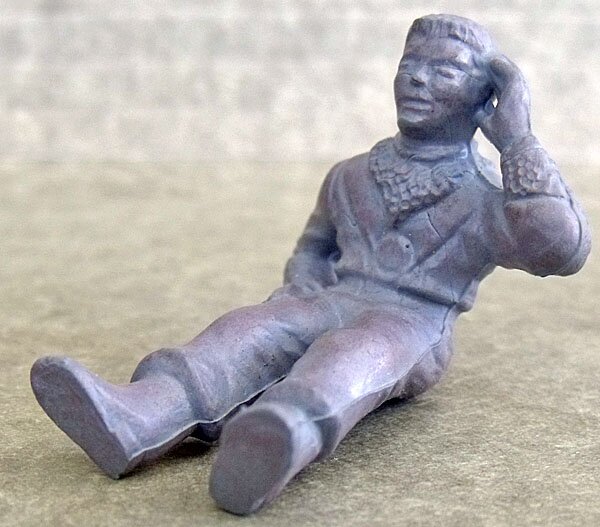 |
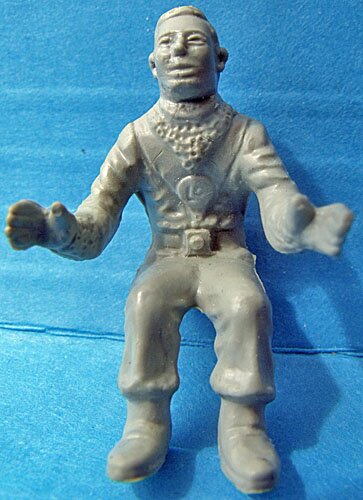 |
| 3. Sitting, reading book | 4. Sitting, hand to ear Or as shown in photos below, perhaps standing? |
5. Seated, arms forward |
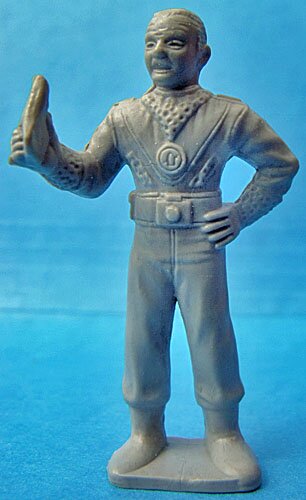 |
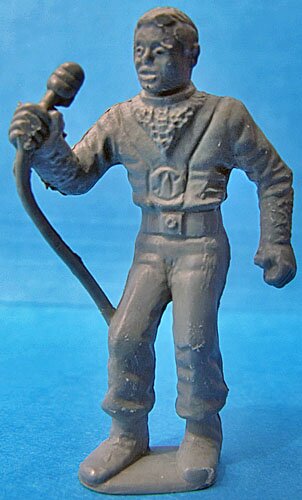 |
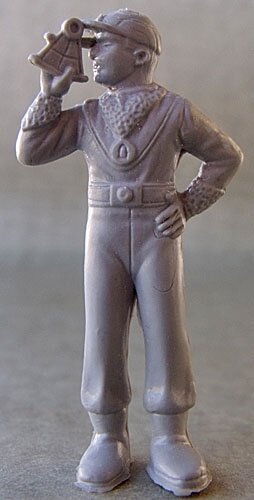 |
| 6. Instructor standing with book | 7. Talking with microphone | 8. Standing with sextant |
 |
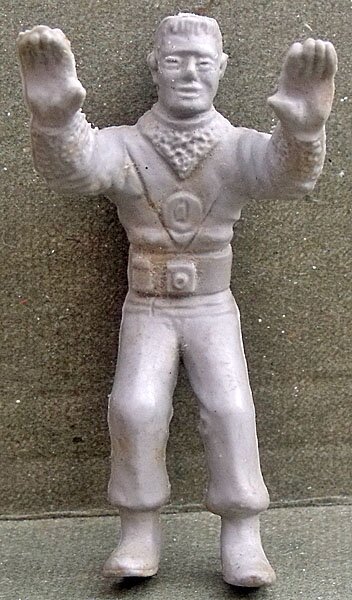 |
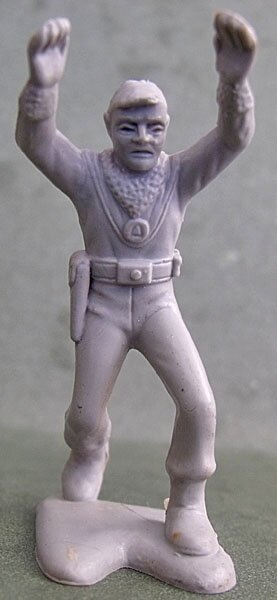 |
| 9. Climbing ladder | 10. Holding or pushing something | 11. Walking, arms up |
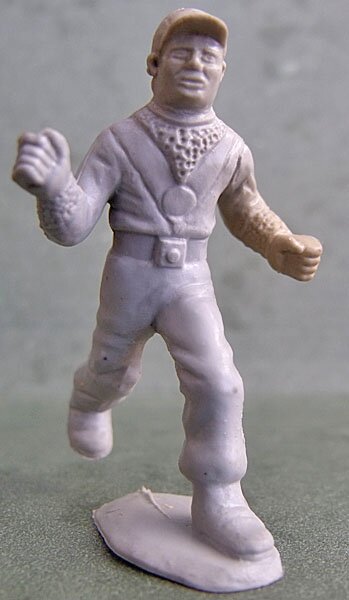 |
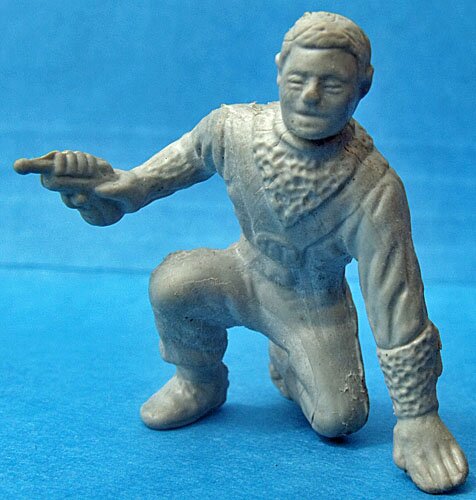 |
| 12. Running | 13. On one knee, ray gun in right hand |
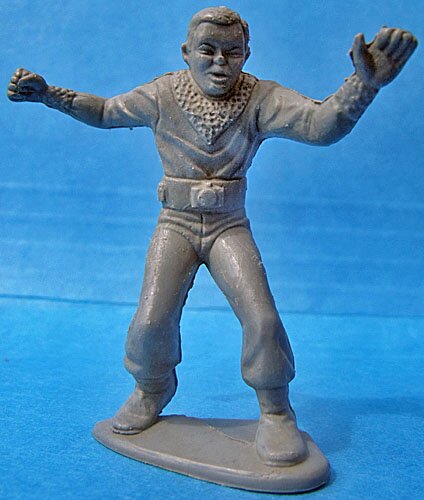 |
 |
| 14. Fighting, right hand up | 15.Fighting, right hand down |
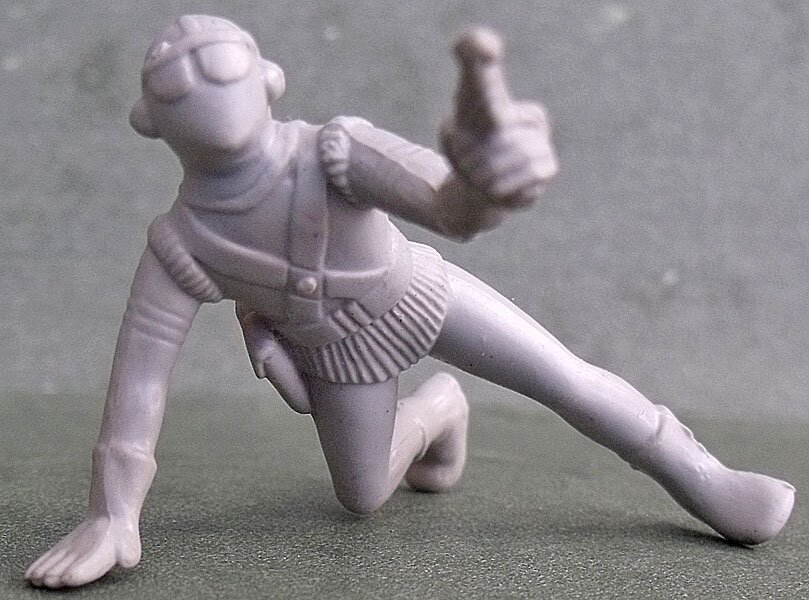 |
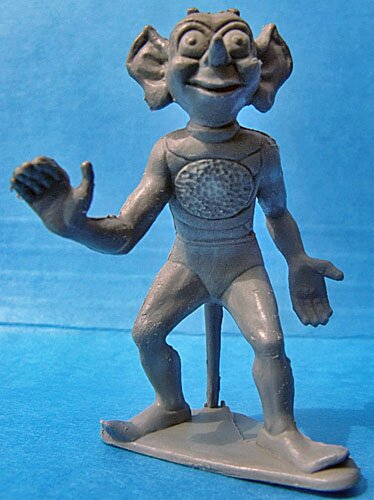 |
| 16. Crawling with ray gun | 17. Big eared alien with one hand up |
| Intended and Unintended Figure Interactions | |||
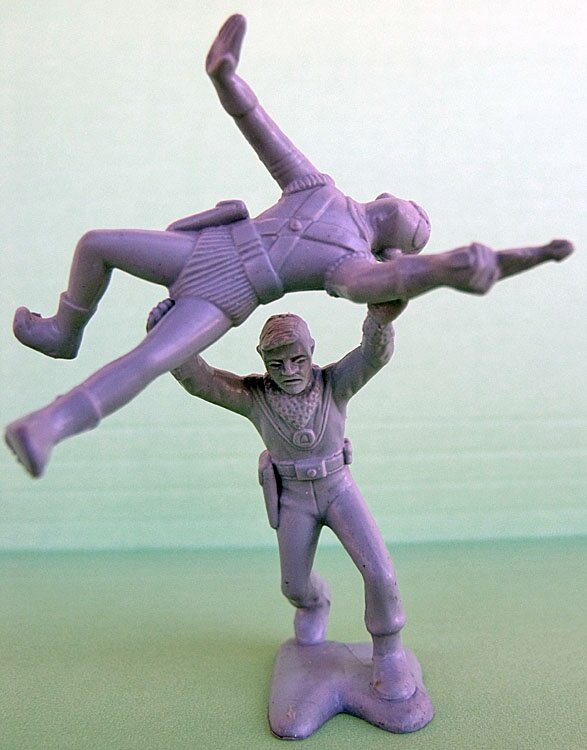 |
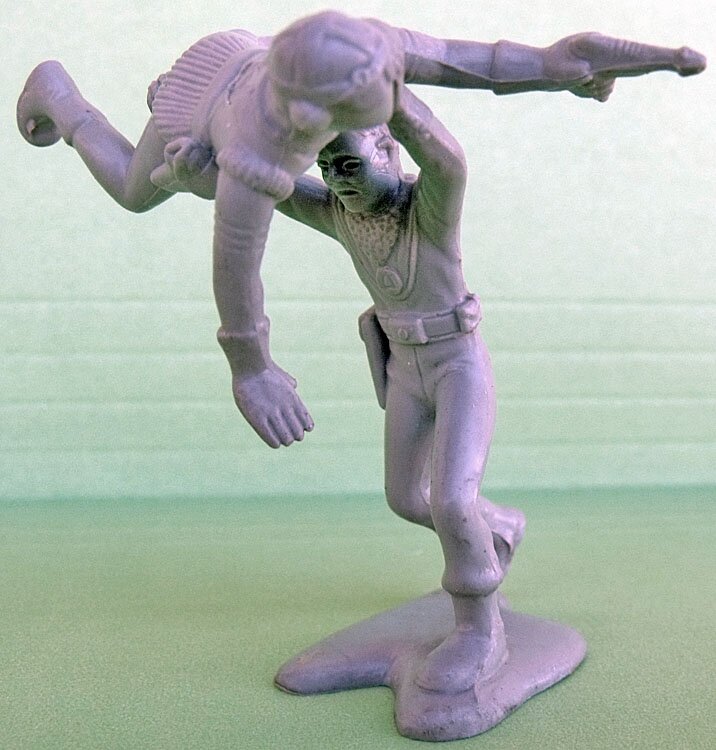 |
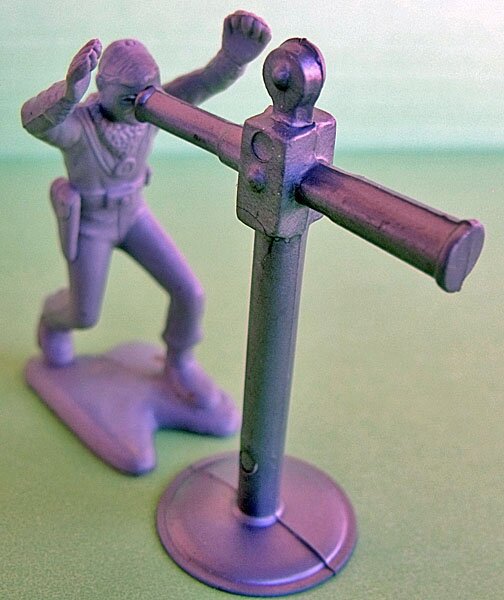 |
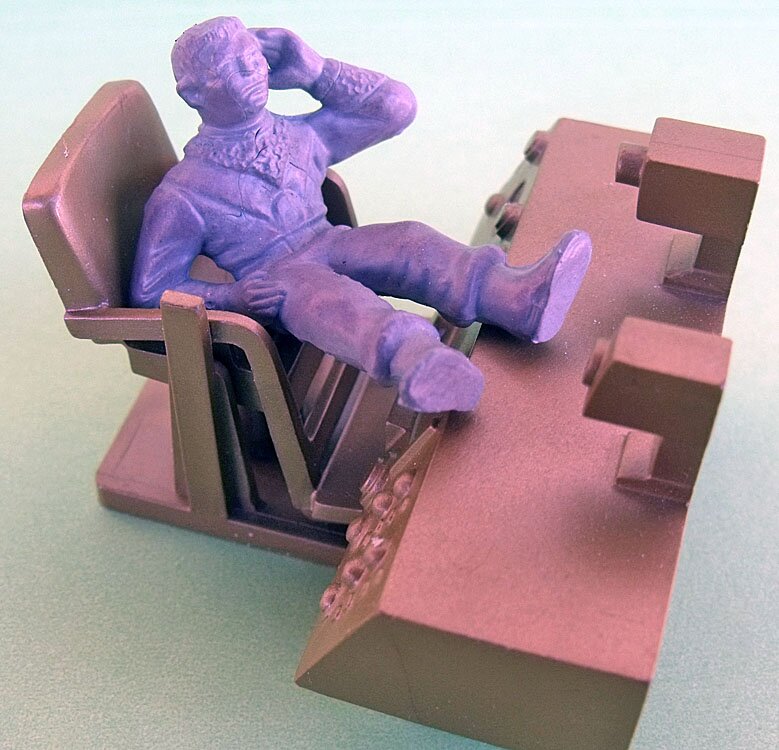 |
| Poses 11 and 16, from above |
Pose 4 above, who I believe is really supposed to fit into the space car. Personally, I like this pose better! | ||
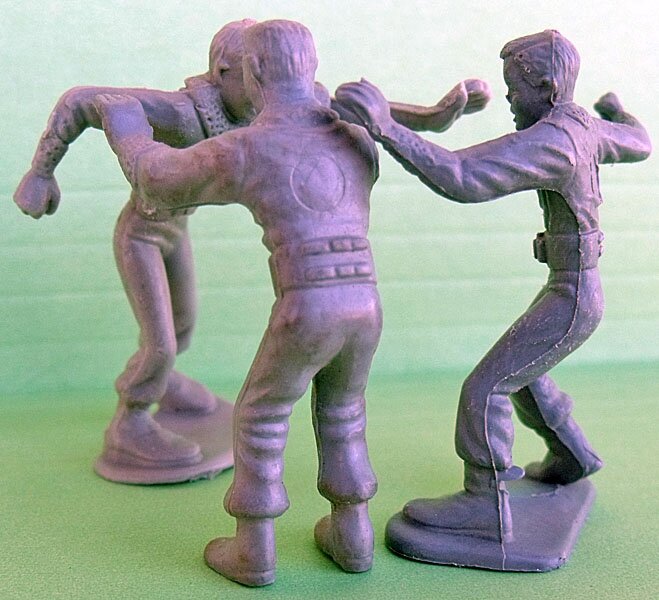 |
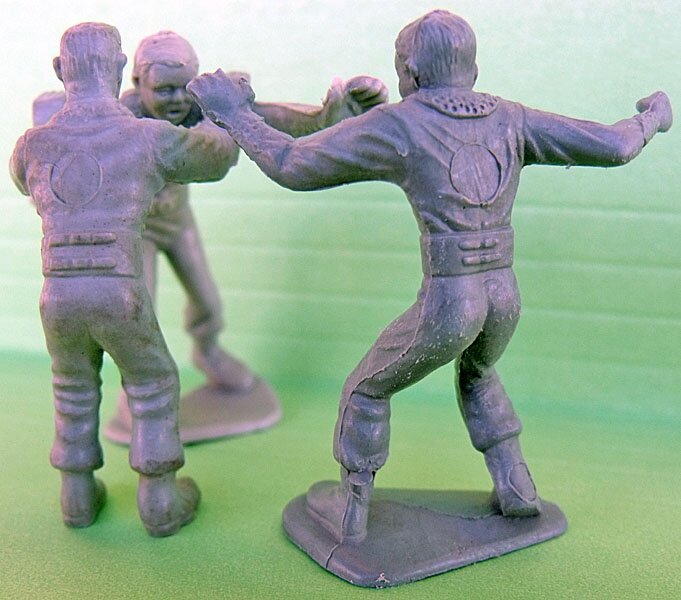 |
 |
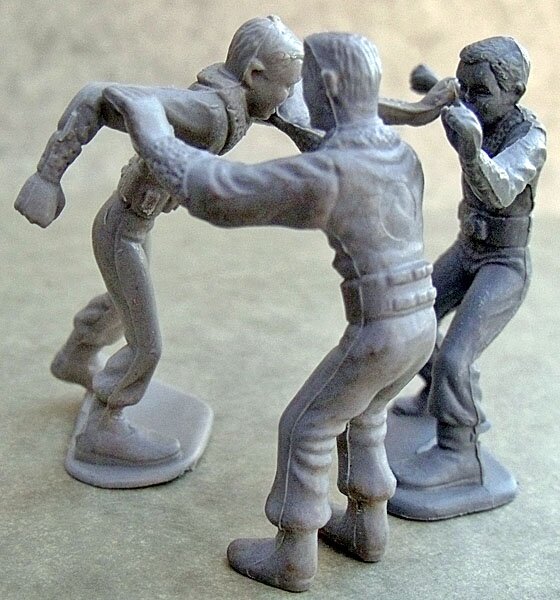 |
| Poses 10, 14, and 15 from above |
|||
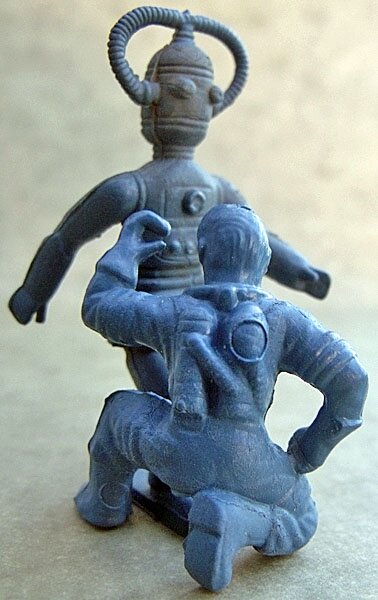 |
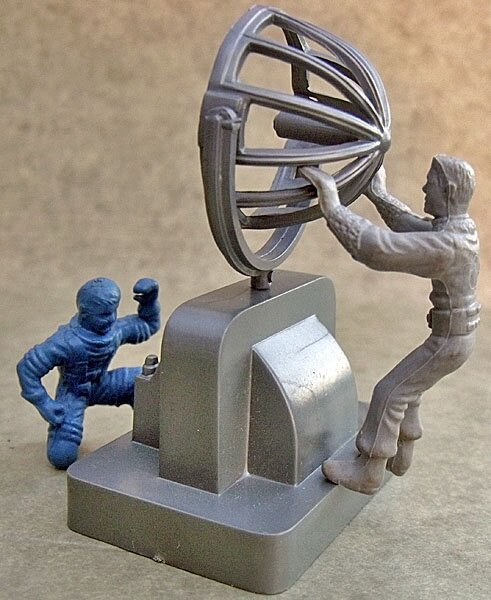 |
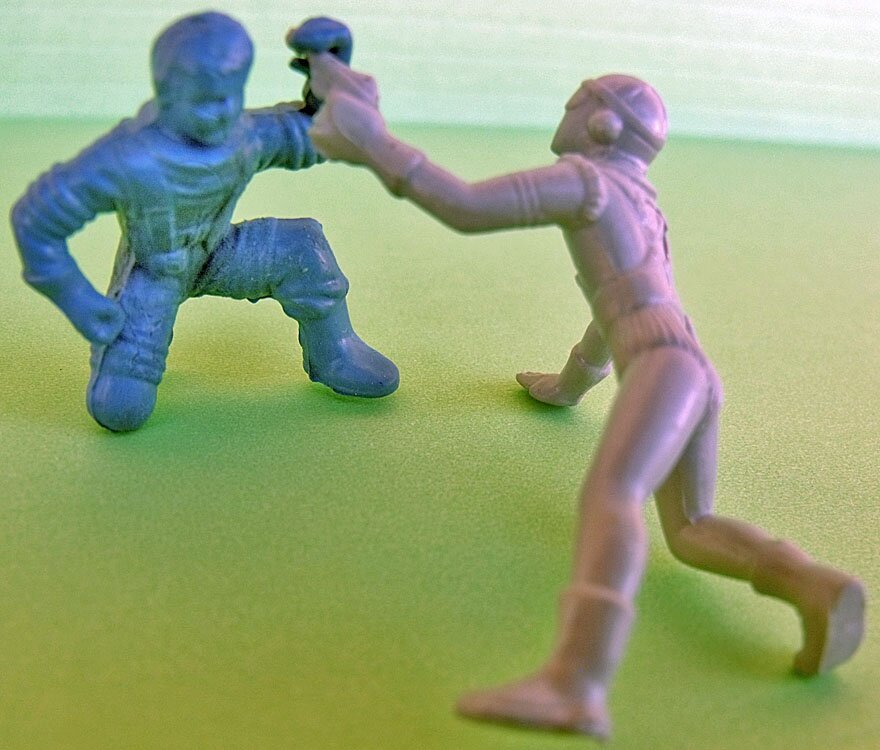 |
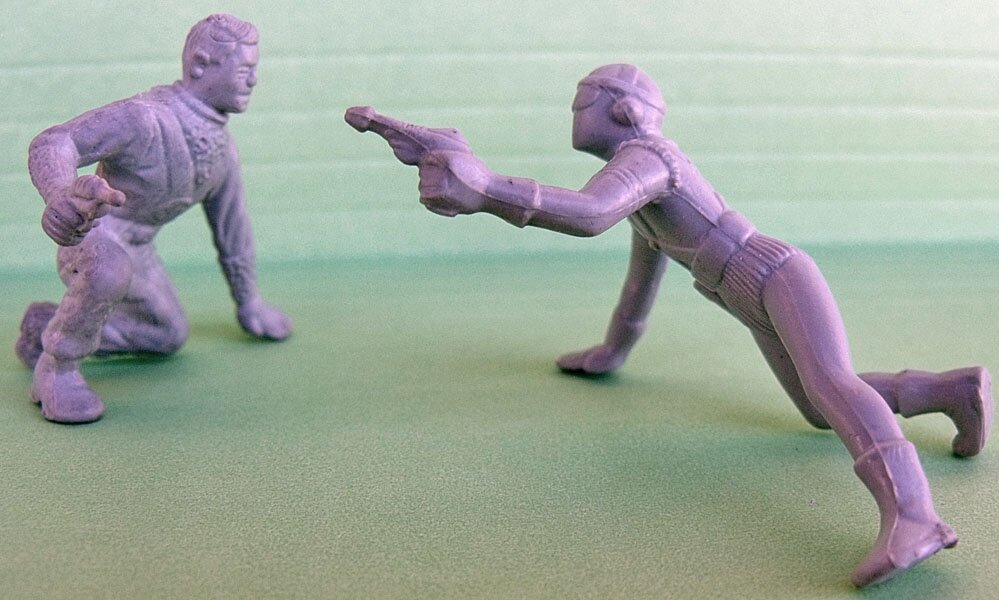 |
| Pose 13 from Space Patrol Group shown below. Generally accepted intent is working on robot, as shown at left. However, he e sits perfectly, however, to be looking at screen on radar equipment. | Was Tom Corbett Pose 13 (at left) the figure intended to be "wrestling" with the Pose 16 Mercurian alien (at right)? | ||
| Collector Bob Speitzer submitted the following additional poses. | |||
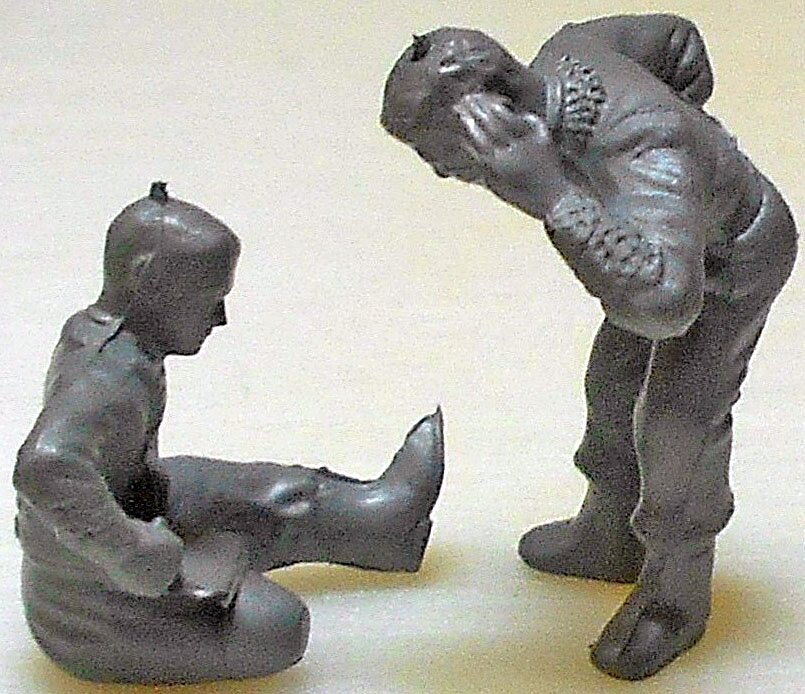 |
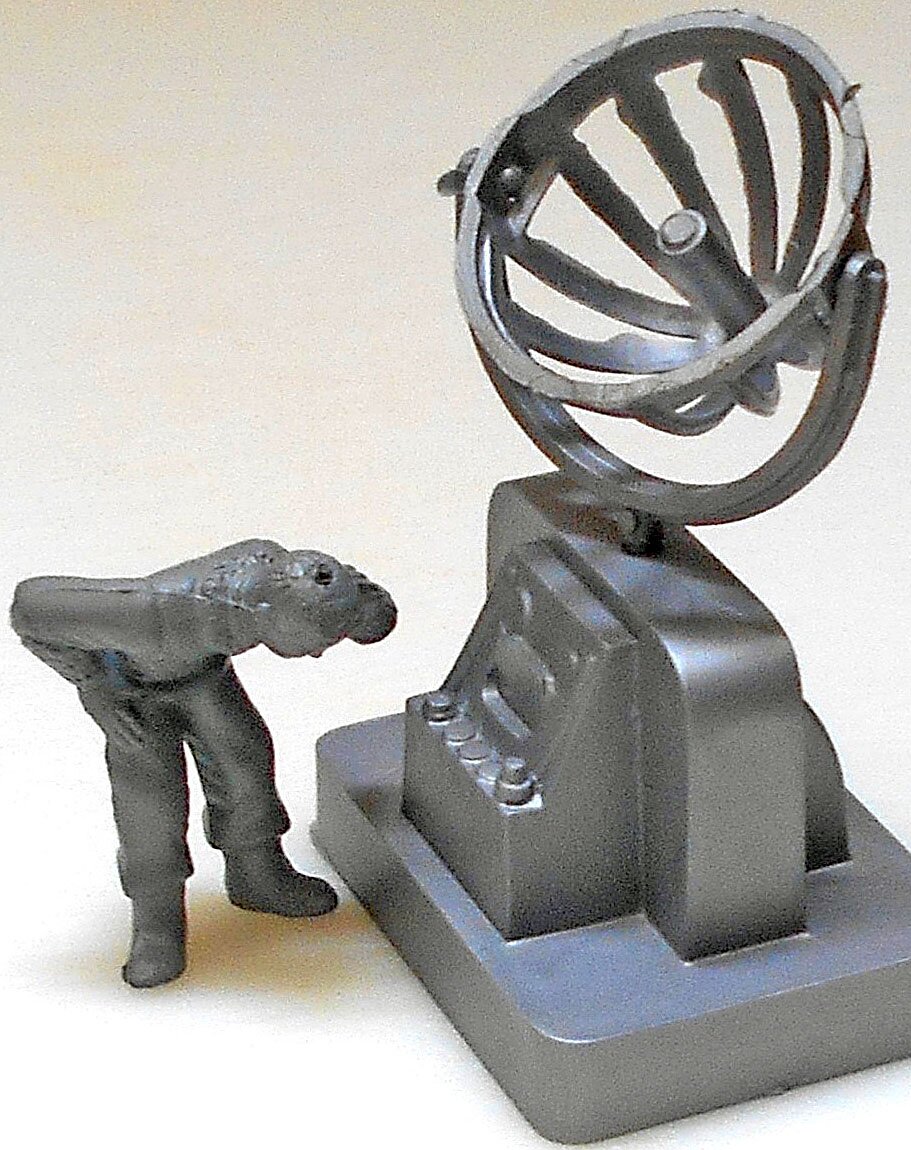 |
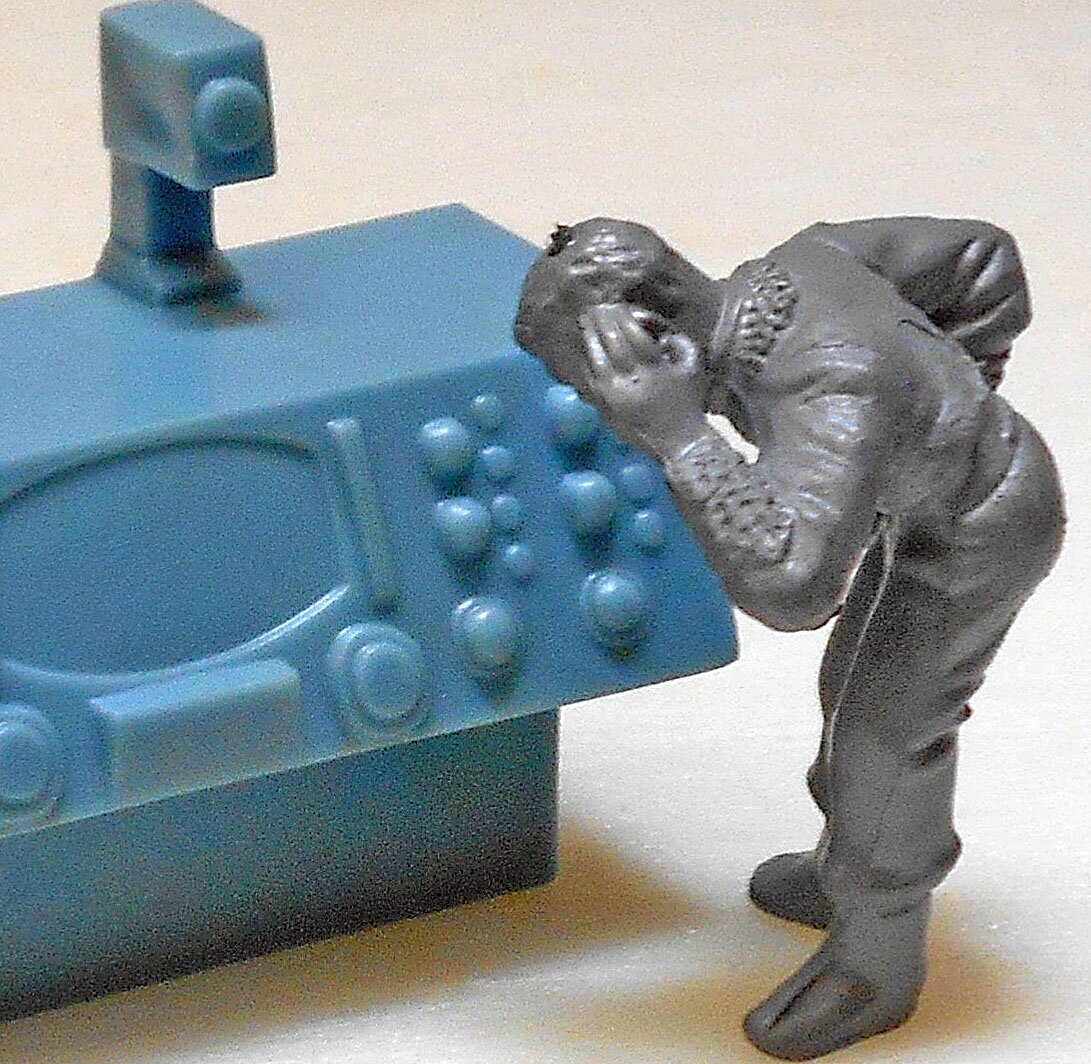 |
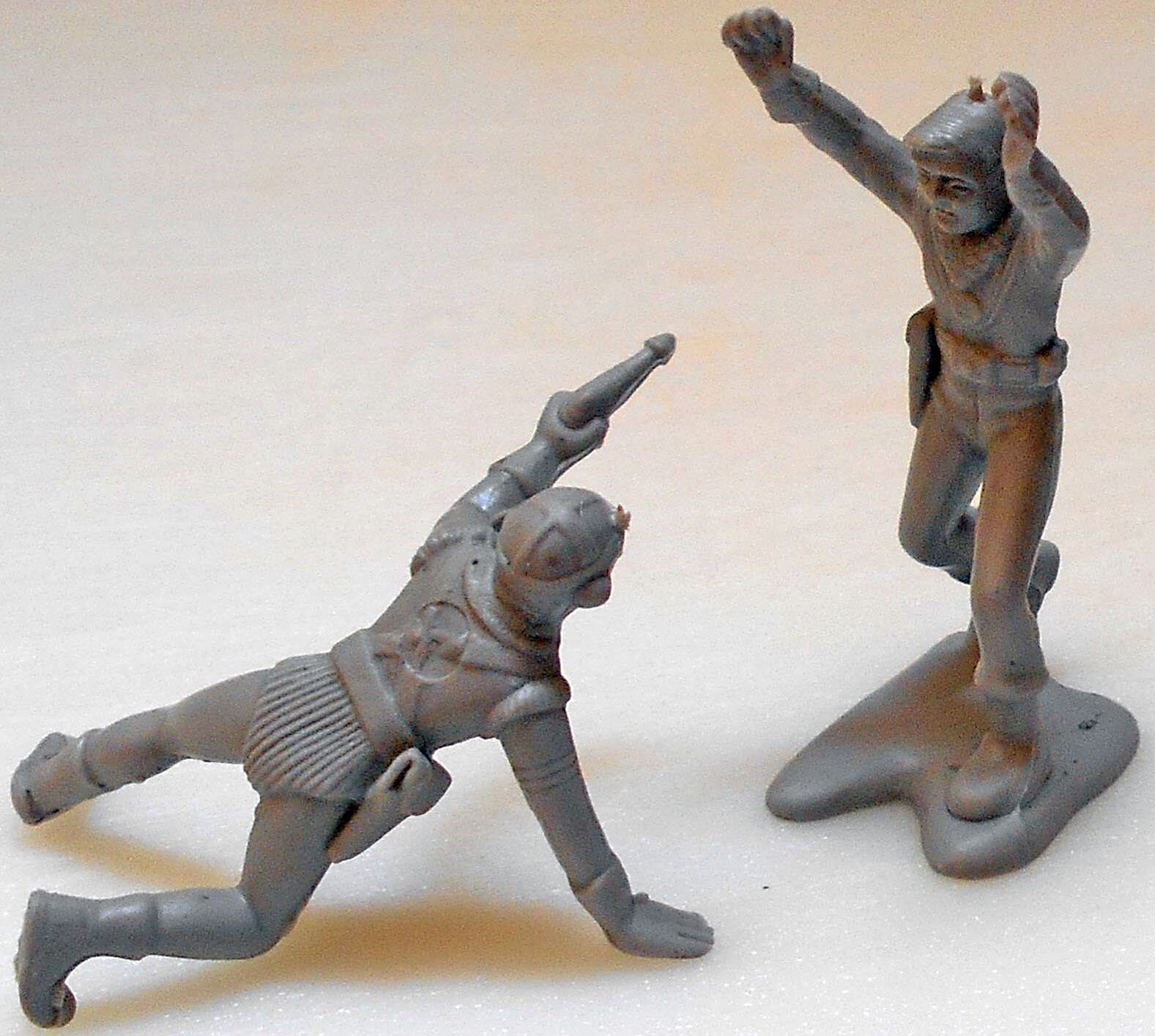 |
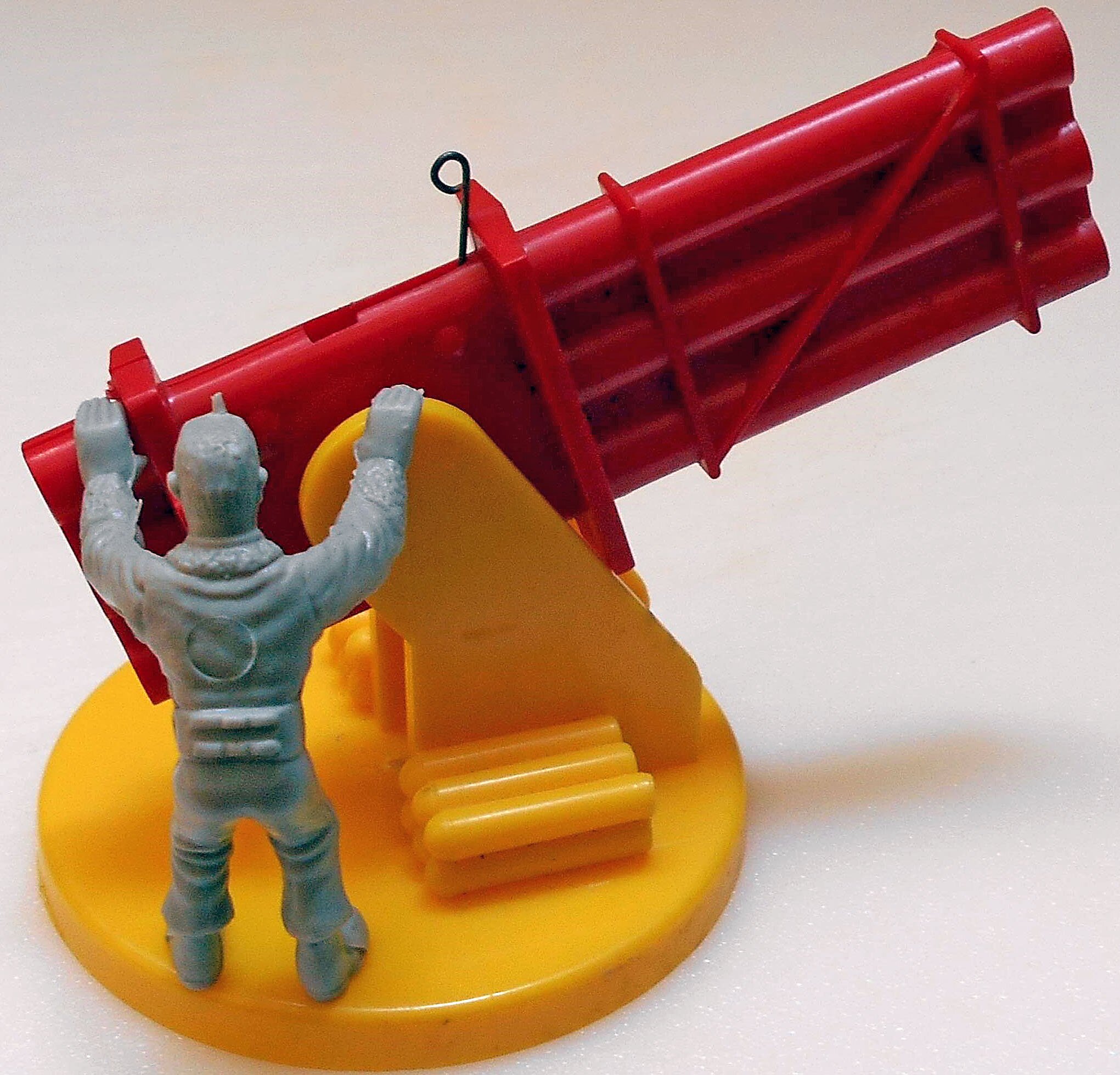 |
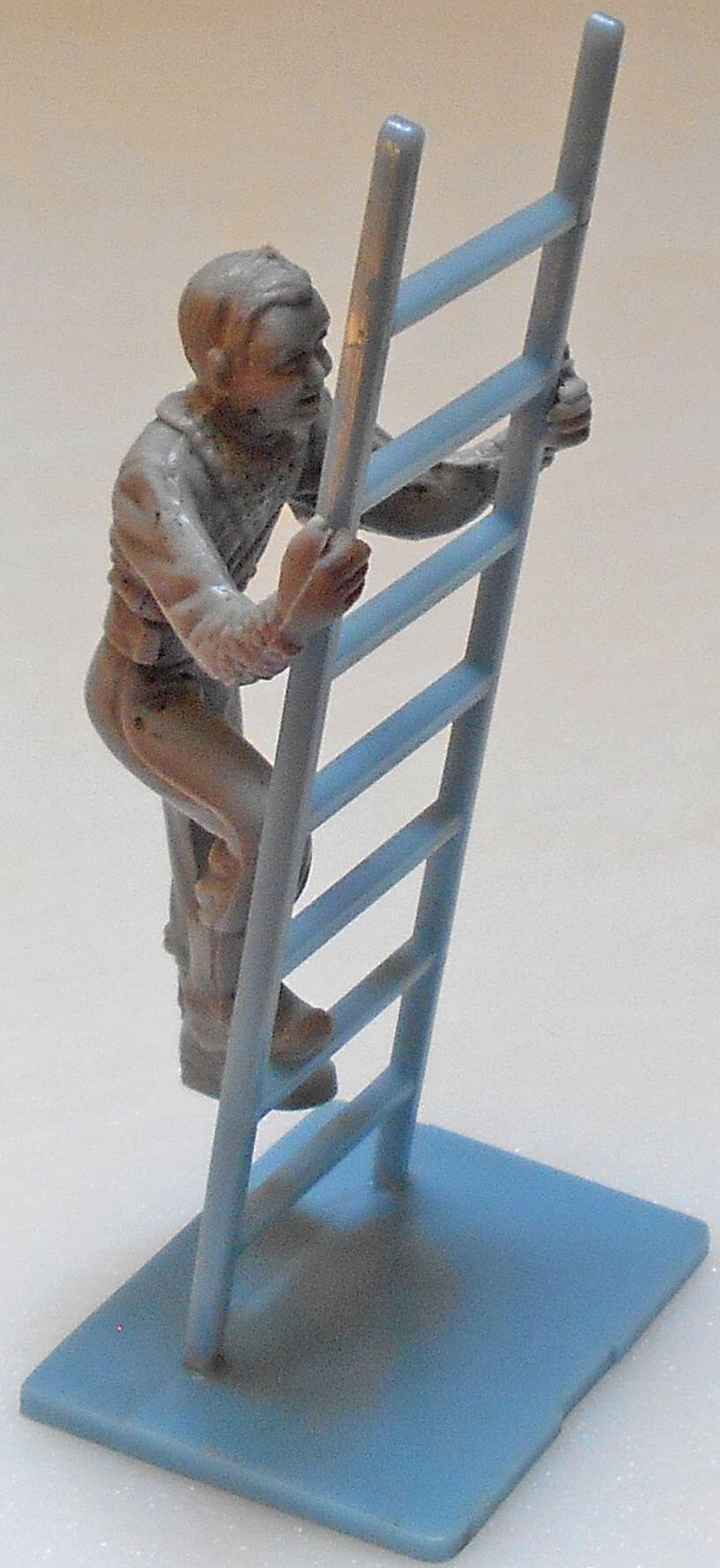 |
 |
|

Space Patrol Astronauts and Aliens
PL-490
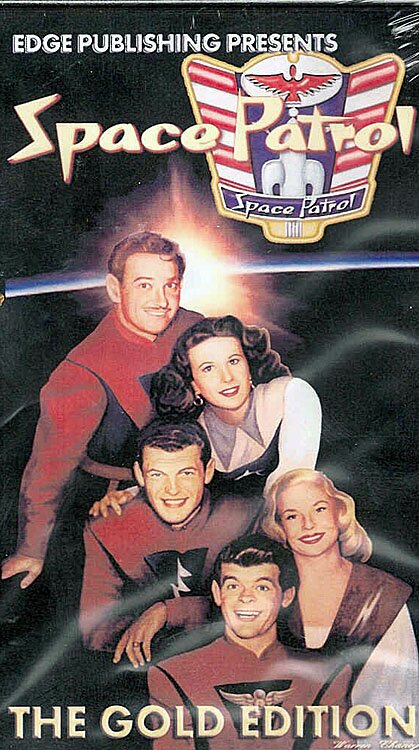
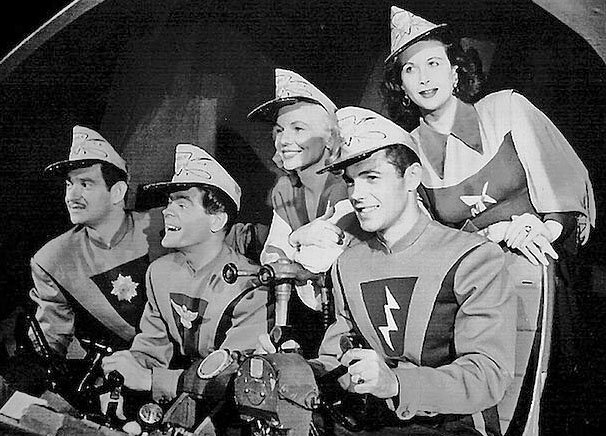 The Space Patrol figure group included 12 figures, made initially in a brown orange and later in blue, yellow, gray, and a light tan. Because the Space Patrol playset was produced only one year, these figures are harder to find and more expensive than the other two groups of 45mm space figures, especially the character figures.
The Space Patrol figure group included 12 figures, made initially in a brown orange and later in blue, yellow, gray, and a light tan. Because the Space Patrol playset was produced only one year, these figures are harder to find and more expensive than the other two groups of 45mm space figures, especially the character figures.Again, although Marx did not specify any of the figures to be characters from the television show, several are easily identified as such. Based on an article in Playset Magazine Issue 26, Pose #1 below is Commander Buzz Corry, Pose #2 is Major Robbie Robertson, Pose #3 is Carol Carlisle, Pose #4 is Assistant Security Officer Tonga, and Pose #5 is Cadet Happy. After receiving information from veteran collector Josh Petrie, I believe that the magazine has Corry and Robertson confused. Pose #2, Josh says, is probably Commander Corry, since he appears to be giving orders. Pose #1 would then be Major Robertson, which makes sense, according to Josh, because Robbie always carried the biggest ray gun! I would add that Robbie also was the one who had a moustache (see photo above), and Pose #1 is the one with a moustache.
Josh also believes that some figures represent a second pose of these characters. He notes that 1) Pose #7 looks suspiciously like Happy and 2) based on insignias on the figures' uniforms, Pose #6 appears to be Commander Corry and #8 Major Robertson again.
 The space suits in this group -- which to me appear to resemble clown costumes -- have a collar ring around their neck, used to attach separate clear plastic space helmets. Having owned a set myself in the 1950s, I think these tiny helmets were one of the neatest accessories Marx made. I presently own none, but they are shown in a photo from collector Terry Royer in the following section on Rex Mars figures. I'm sure that these were one of the most easily lost pieces in any playset. Fortunately, identical helmets have been re-issued and are often seen on Ebay, though even the re-issues are not cheap.
The space suits in this group -- which to me appear to resemble clown costumes -- have a collar ring around their neck, used to attach separate clear plastic space helmets. Having owned a set myself in the 1950s, I think these tiny helmets were one of the neatest accessories Marx made. I presently own none, but they are shown in a photo from collector Terry Royer in the following section on Rex Mars figures. I'm sure that these were one of the most easily lost pieces in any playset. Fortunately, identical helmets have been re-issued and are often seen on Ebay, though even the re-issues are not cheap. The alien with big ears, waving pose is also in the Tom Corbett and Rex Mars figure groups, and the frogman alien is in the Rex Mars group.
And I must add that the ray gun held by Major Robertson in Pose 1 is one humungous gun. Wyatt Earp would have loved it!
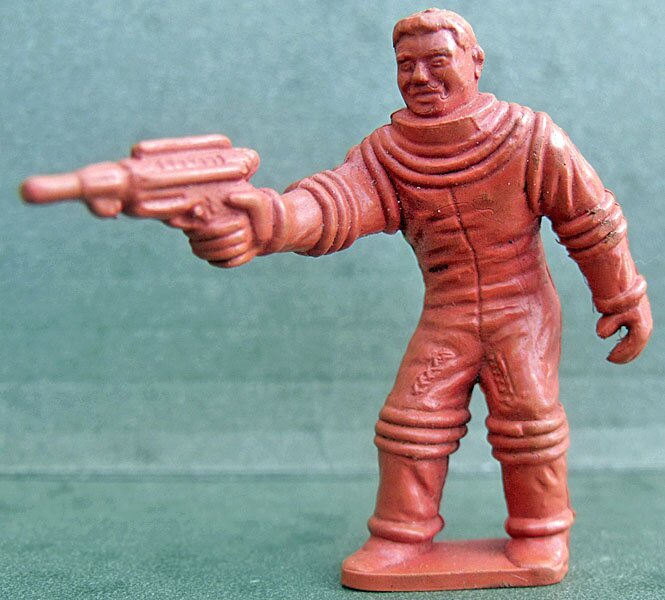 |
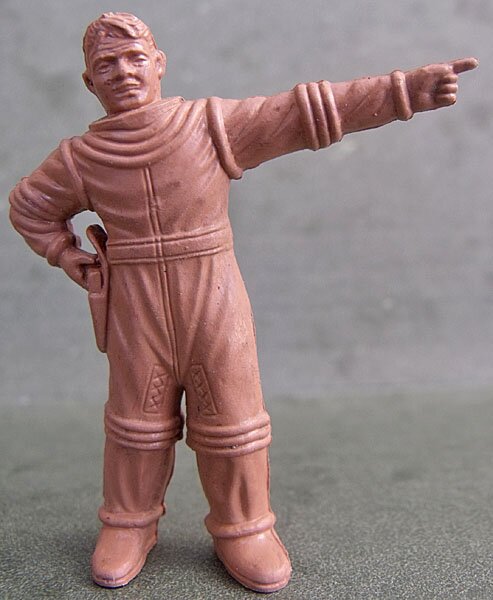 |
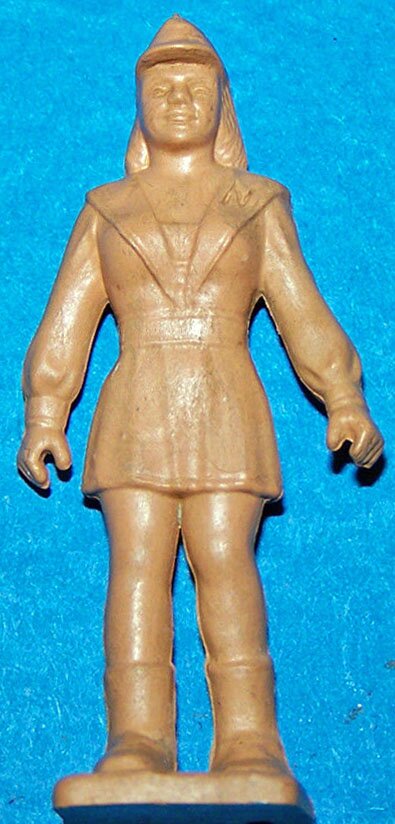 |
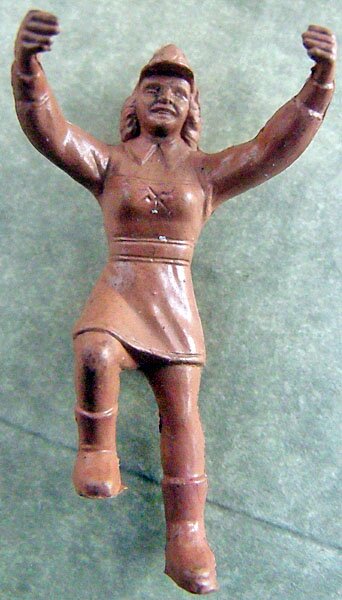 |
| 1. Major Robertson, standing with gun in right hand | 2. Commander Corry, giving orders | 3. Carol, standing Photo courtesy of Dennis Swing |
4. Tonga, climbing |
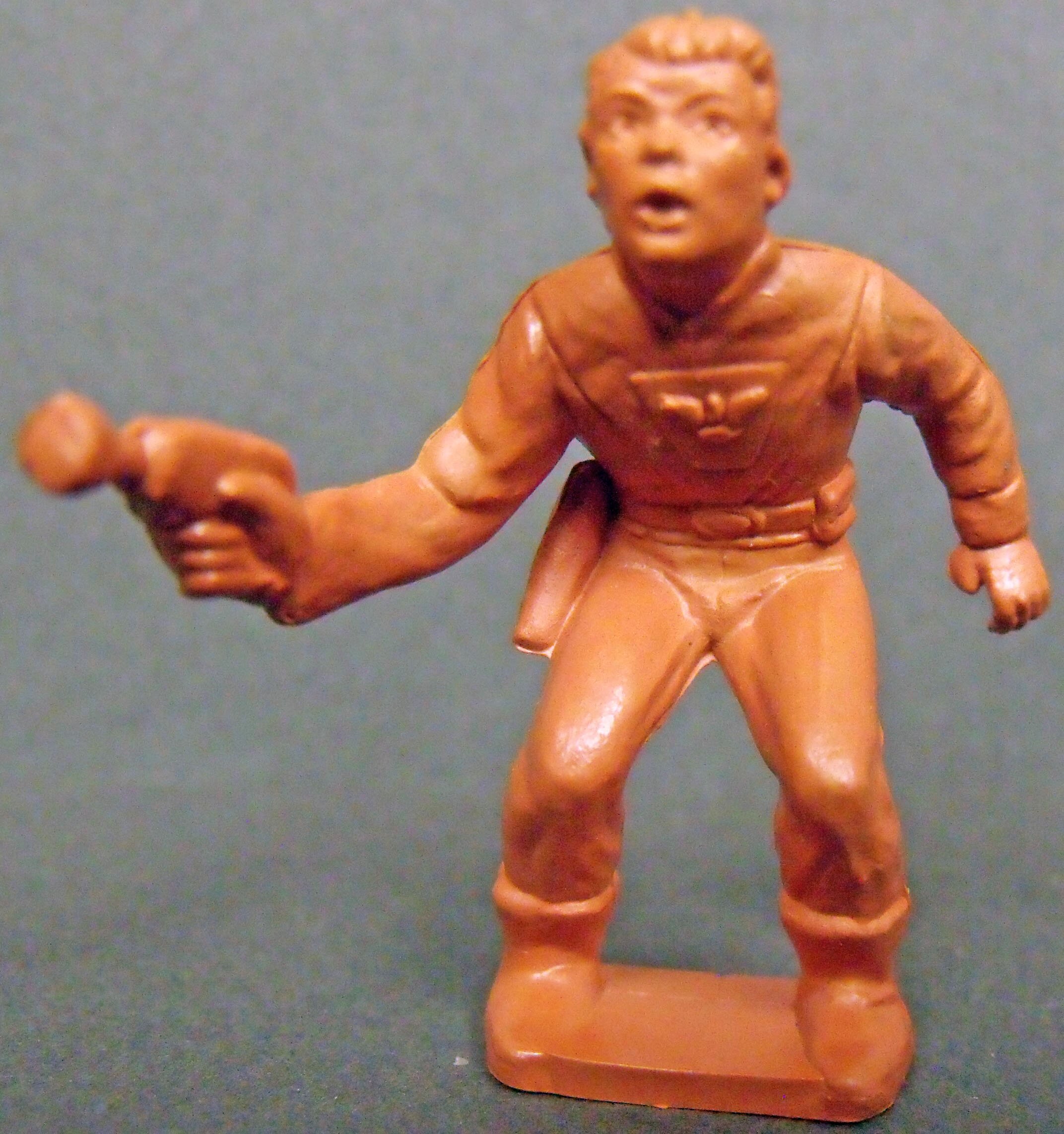 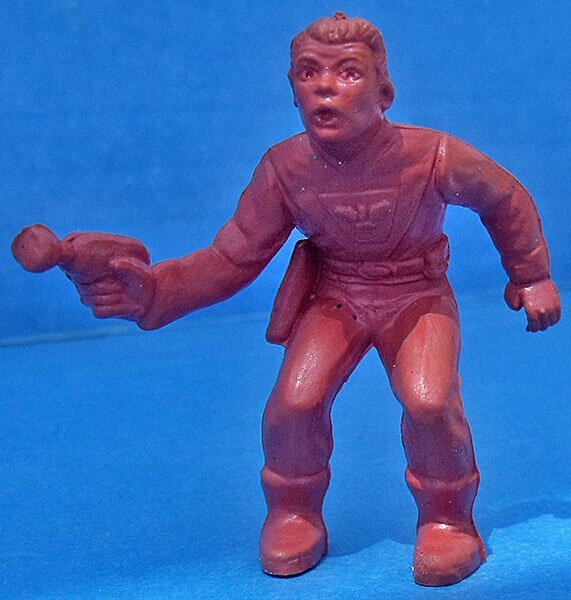 |
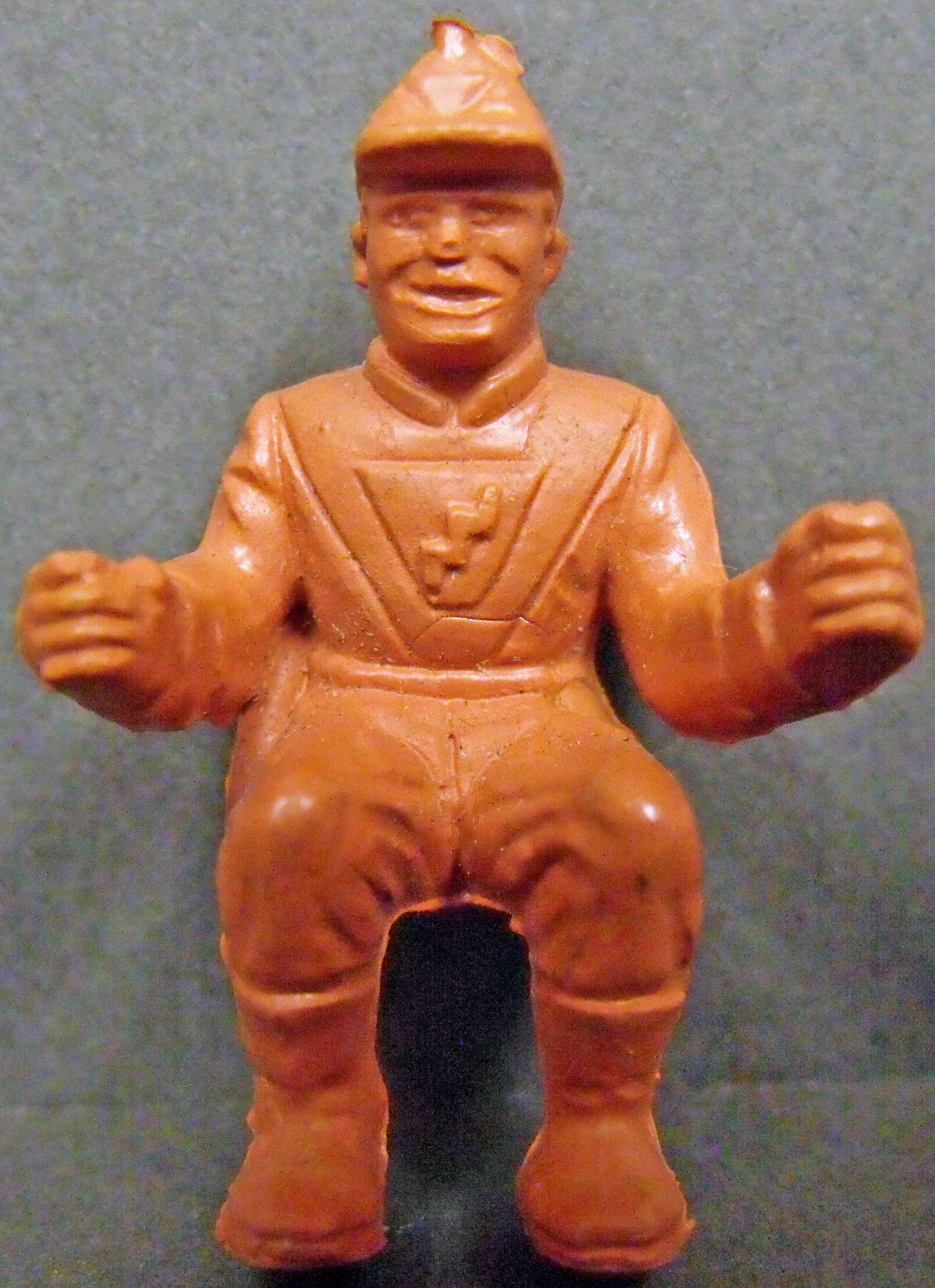 |
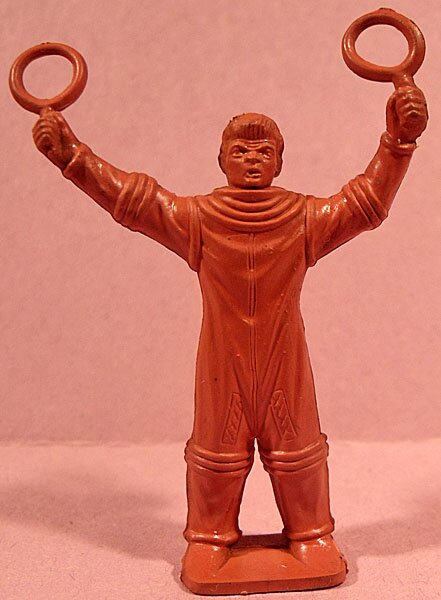 |
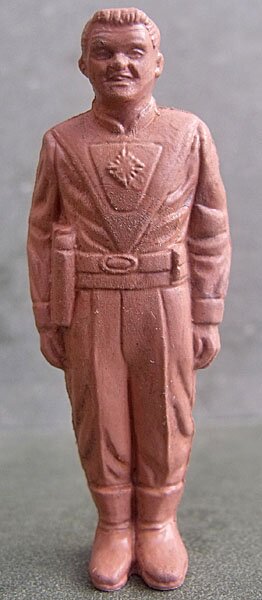 |
| 5. Cadet Happy, crouching with ray gun Examples of figure with and without base Photo on left courtesy of David Schafer |
6. Driver Photo courtesy of David Schafer |
7. Arms raised with hoop signal equipment | 8. At attention |
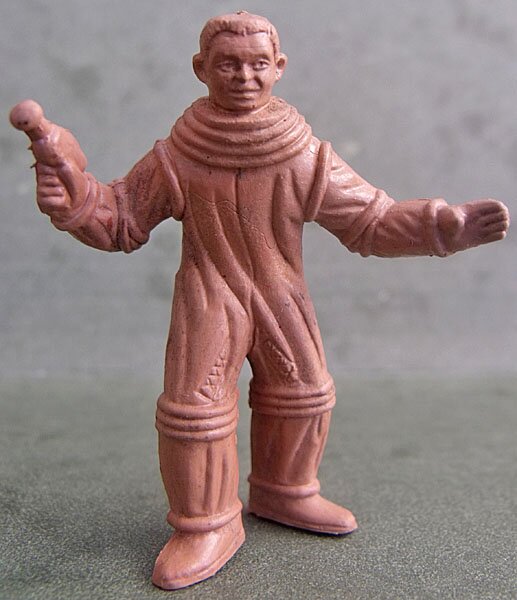 |
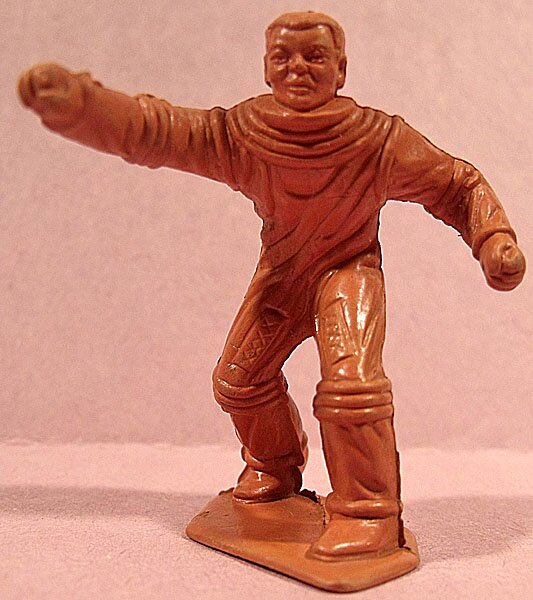 |
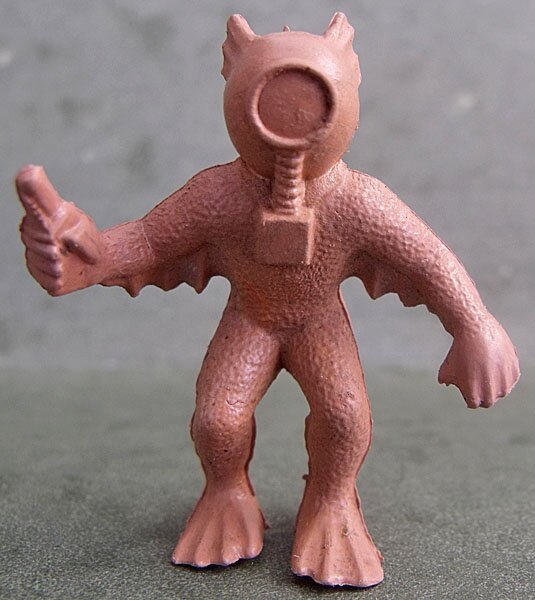 |
 |
| 9. Walking with ray gun in right hand | 10. Punching with right hand | 11. Alien frogman | 12. Big eared alien with hand up |

Rex Mars Astronauts and Aliens
PL-479
The Rex Mars (sometimes called generic) figure group includes 19 figures. They were initially issued in medium blue and yellow, but later made in gray and orange, as well as a soft plastic cream. The aliens were also produced in a translucent green in Moon Base playsets from the early 1960s. Veteran collector Josh Petrie tells me that some Rex Mars spacemen also populated the first Cape Canaveral playset in a soft plastic cream and metallic blue; apparently the molds for Cape Canaveral personnel (see below) were a late arrival. Rex Marx figures also came in a gray soft plastic in the final Captain Space set in 1957. (Ross believes that four Marx construction figures were also included in that first set).
The group includes no character figures, but is the only one of the three 45mm group that has all six of the company's 45mm alien figures.
All 13 astronauts in this group are wearing space suits and have molded collar rings around their neck to attach separate clear plastic space helmets, the same helmets as used for some of the Space Patrol figures (see photo below). Having owned a set myself in the 1950s, I think these tiny helmets were one of the neatest accessories Marx made. However, I also am sure that these were one of the most easily lost pieces in any playset. Fortunately, identical helmets have been re-issued and are often seen on Ebay, though of course even the re-issues are not cheap.
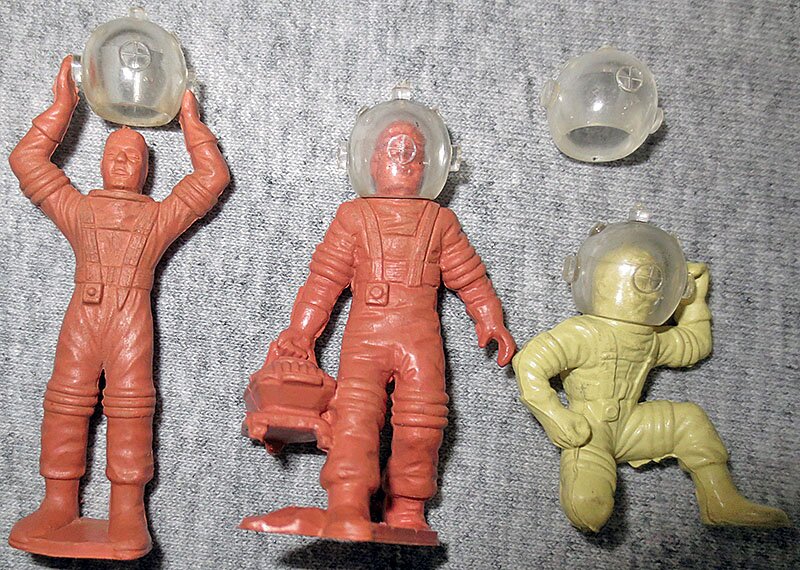 |
| Space helmets used for Space Patrol and Rex Mars figures Photo courtesy of collector Terry Royer |
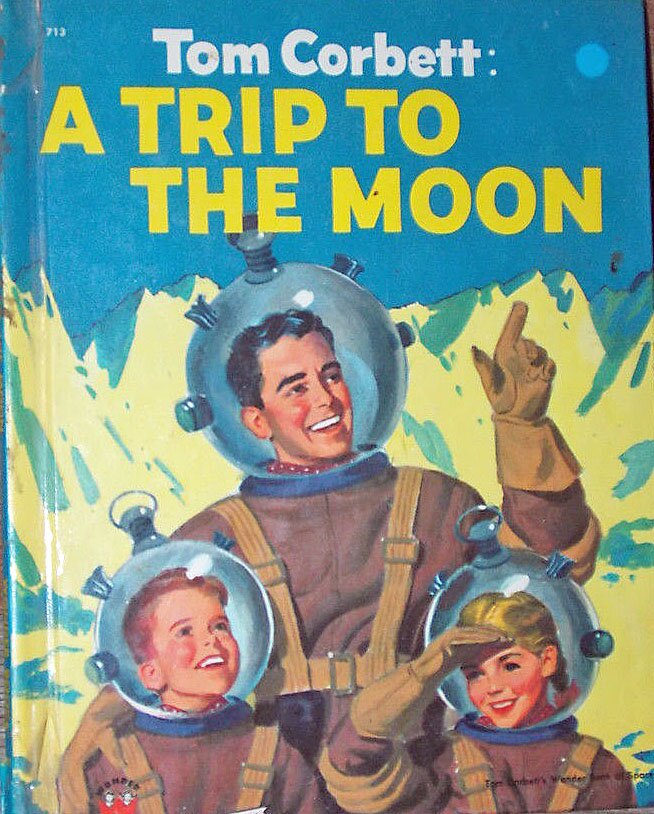 Josh Petrie has put forth an interesting theory on this group that, after doing a little research on the Internet, I fully agree with. It is very probable that the Rex Mars figures were initially designed to represent the Tom Corbett television cast in their space suits. Their suits are identical to those in the Tom Corbett show, newspaper comic strip, and comic books. Note especially the suspenders! Josh wrote, "'Rex Mars' has become the hobby's accepted title for this group, but the Rex Mars sets did not have any unique figures, just the recycled figures from the two licensed sets (Tom Corbett and Space Patrol). Both 'Rex Mars' and 'Captain Space' were inventions of the Marx team that enabled them to sell the same previously developed product without having to pay any licensing fees to anyone."
Josh Petrie has put forth an interesting theory on this group that, after doing a little research on the Internet, I fully agree with. It is very probable that the Rex Mars figures were initially designed to represent the Tom Corbett television cast in their space suits. Their suits are identical to those in the Tom Corbett show, newspaper comic strip, and comic books. Note especially the suspenders! Josh wrote, "'Rex Mars' has become the hobby's accepted title for this group, but the Rex Mars sets did not have any unique figures, just the recycled figures from the two licensed sets (Tom Corbett and Space Patrol). Both 'Rex Mars' and 'Captain Space' were inventions of the Marx team that enabled them to sell the same previously developed product without having to pay any licensing fees to anyone."As with the Tom Corbett figure group, some of the Rex Mars figures are made to interact with each other or with playset accessories. Pose #7 seems to have been made to be helping the wounded astronaut in Pose 6. However, he can also be posed holding a space helmet. Pose 8 is intended to be putting on a helmet, but can also be placed behind the small telescope accessory as if he is directing someone in a surveying project. Though I'm not convinced, many collectors believe that the kneeling astronaut in Pose 13 is supposed to be adjusting a knob on the robot in Pose 14 (see photo at the end of the Tom Corbett Group section above). That might make sense, except that the robot appears to be walking. Josh, on the other hand, proposes that the Robot simply broke down just as he was taking a step forward. Buuuut.....we'll never know for sure!
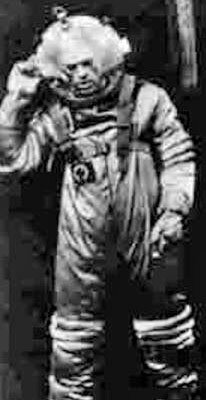 |
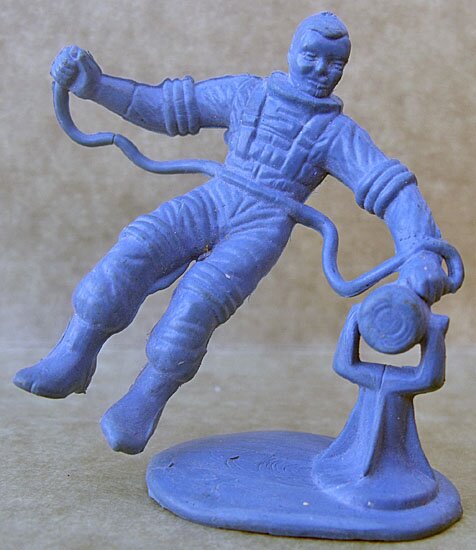 |
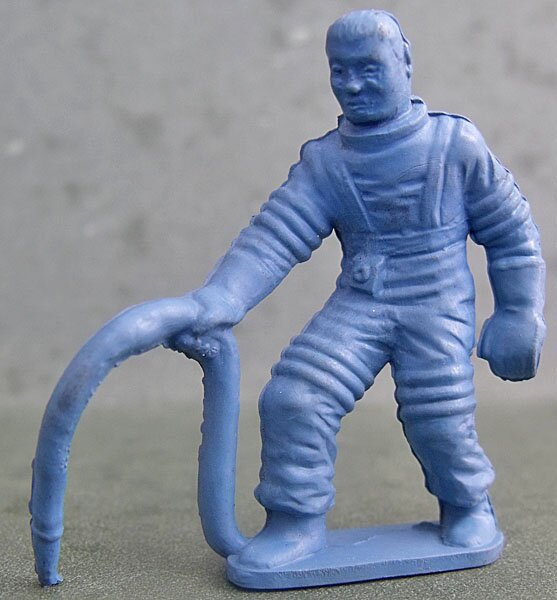 |
| 1. Floating with flood light | 2. Holding fuel line |
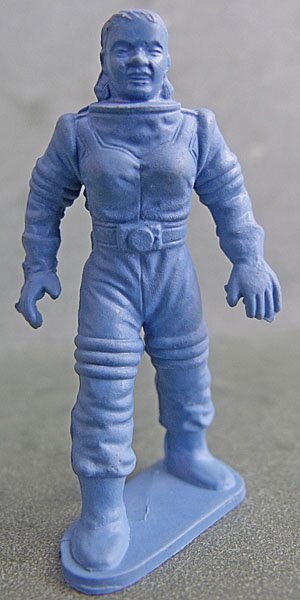 |
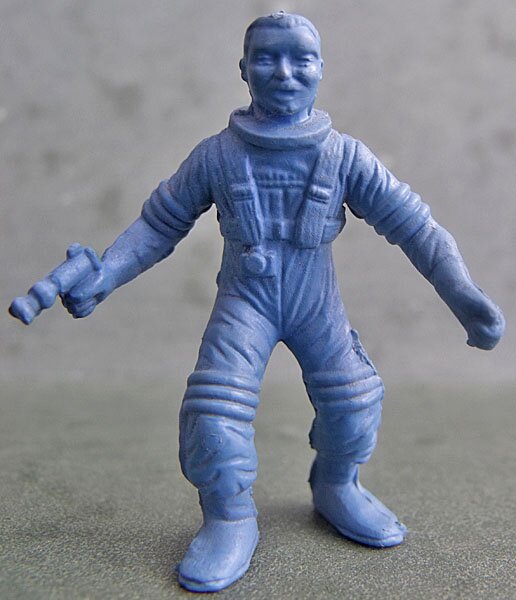 |
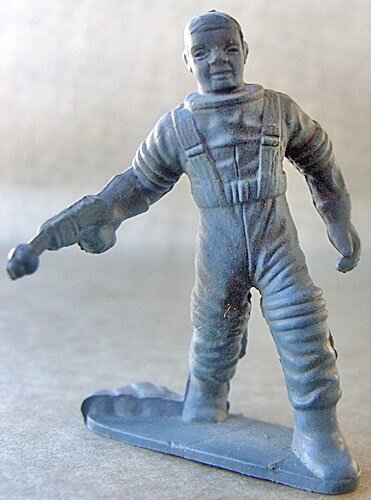 |
| 3. Female, walking | 4. Holding ray gun in right hand, knees bent | 5. Holding ray gun in right hand, knees straight |
 |
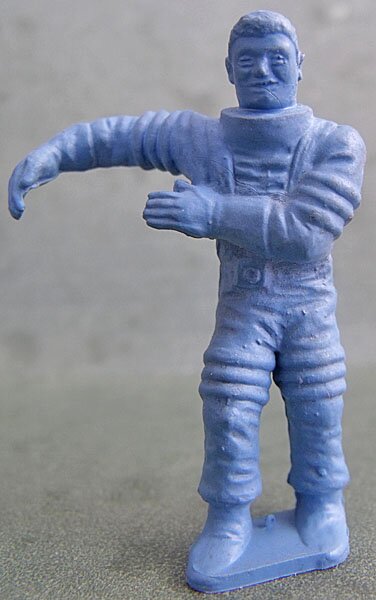 |
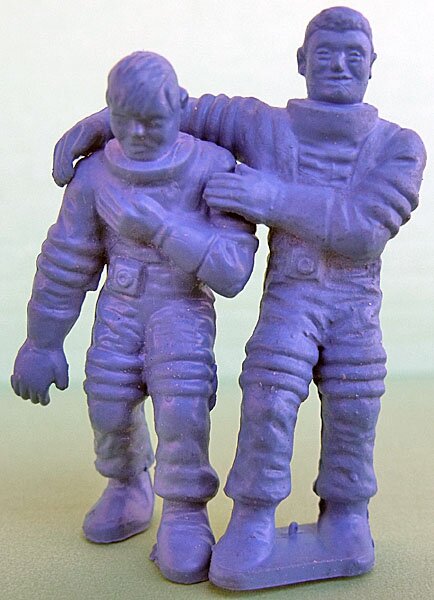 |
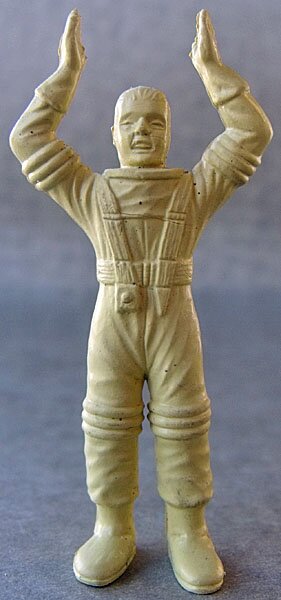 |
| 6. Wounded | 7. Assisting wounded man | Poses 6 and 7 together | 8. Putting on helmet |
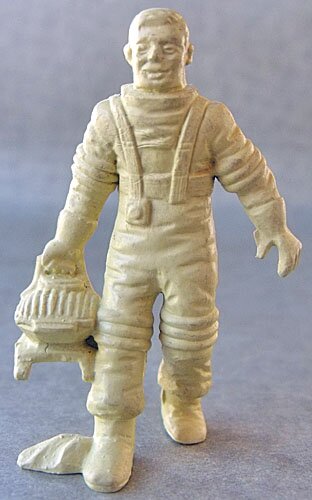 |
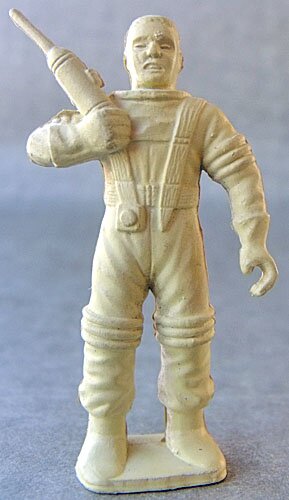 |
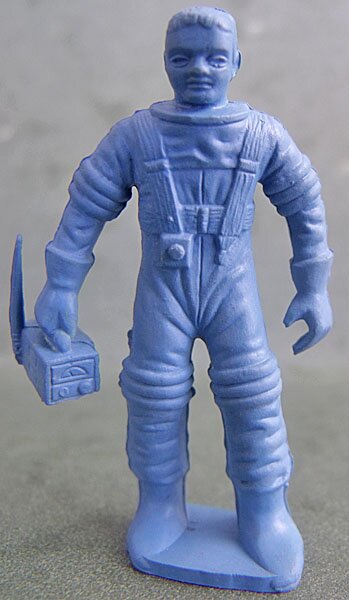 |
|
| 9. With 3-legged equipment in right hand | 10. With walkie-talkie | 11. With geiger counter |
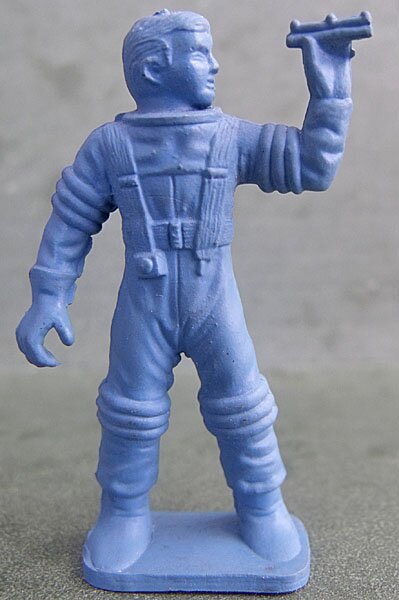 |
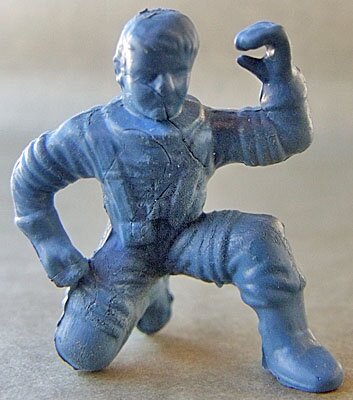 |
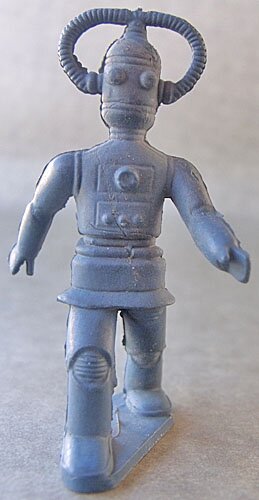 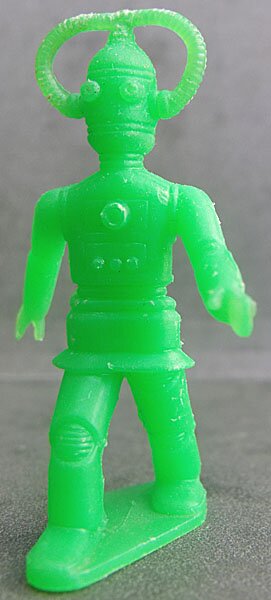 |
| 12. Looking through scope | 13. Kneeling, perhaps adjusting robot or his helmet | 14. Robot (in blue and green) |
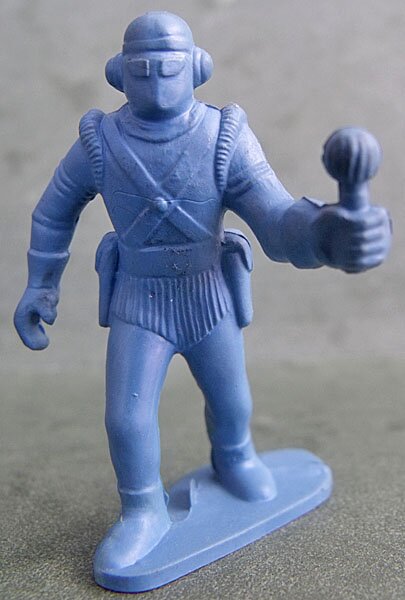 |
 |
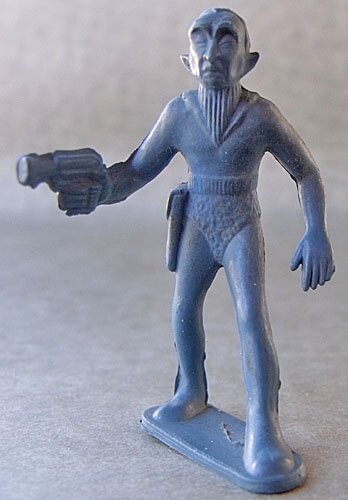 |
| 15. Alien, walking with translator | 16. Big eared alien with hand up | 17. Alien with ray gun and pointed ears |
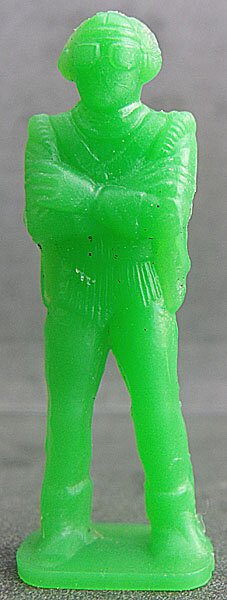 |
 |
| 18. Alien standing, arms folded | 19. Alien frogman |

| Cape Canaveral Ground Crew |
In October 1957, the U.S.S.R. became the first to successfully launch a satellite into orbit around the Earth. American concern about being second best spurred new interest in the country's space progam. In 1960, a youthful John F. Kennedy was elected president and, in his inauguration speech, predicted that the U.S. would have a man on the moon within the decade.
With the space race captivating the attention of the American public, Marx revised its space playsets in 1958 to include much more realistic figures and accessories, based on the U.S.'s space facility at Cape Canaveral. According to PFPC Issue 46, the series of Cape Canaveral sets continued until 1968, when the Carry-All version was released. A few sets carried the name Cape Kennedy when the name of the facility was changed after President Kennedy died in 1963. As described below, about half of the Cape Canaveral figures were previously used as Air Force troops and the other half were created for and used exclusively in the Canaveral sets. With added realism, gone are the aliens and clownish space suits.
Air Force Figures
PL-
These figures are identical to the company's 1954 Air Force figures included in some military playsets. Marx simply omitted two obviously military-related poses, the airman holding up a rocket and the airman holding a machine gun ammunition belt. The others fit well in space exploration sets, usually paired with the scientists and engineers group shown in the next secion. And, according to PFPC Issue 46, even those military-related poses were included in at least one Cape Canaveral Set (#4562).
 As noted on Kent Sprecher's web site, these figures are about 50mm tall and, in military playsets, had a flat base with the normal two push pin marks. In an attempt to make them more compatable with the 54mm scale used for the scientists and engineers group, Marx gave those in space sets a base about 4mm high. This thicker base is concave with a lip running around its bottom (see photo at left).
As noted on Kent Sprecher's web site, these figures are about 50mm tall and, in military playsets, had a flat base with the normal two push pin marks. In an attempt to make them more compatable with the 54mm scale used for the scientists and engineers group, Marx gave those in space sets a base about 4mm high. This thicker base is concave with a lip running around its bottom (see photo at left).Of course, the decision to add the larger base was obviously one made by upper management, because in reality it does nothing to make the smaller figures more compatible with the larger figures. It just makes them look like short guys with big bases.
Although a couple of the figures below are metallic blue, space playset figures were most often gray and sometimes cream. Military sets usually had the group in metallic blue.
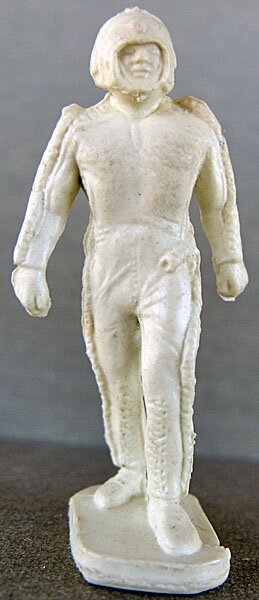 |
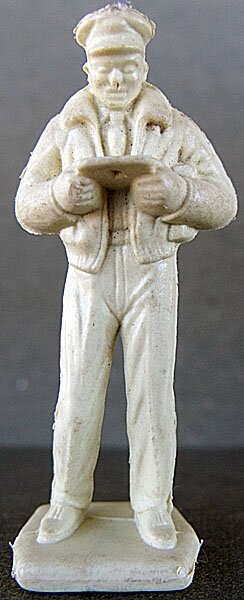 |
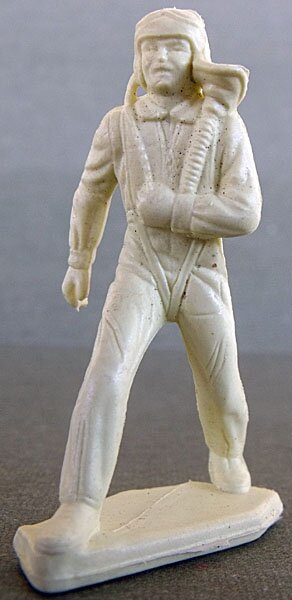 |
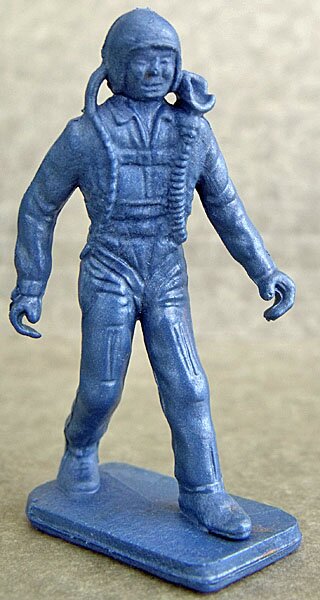 |
| 1. Pilot walking in high altitude suit | 2. Pilot standing, reading paper | 3. Pilot walking, hand at chest | 4. Pilot walking, swinging arms |
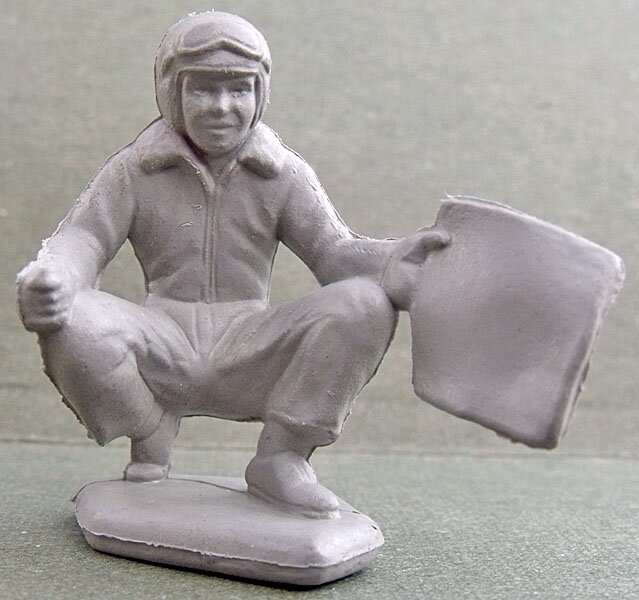 |
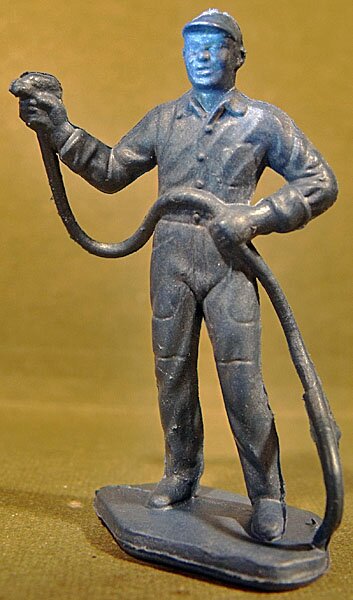 |
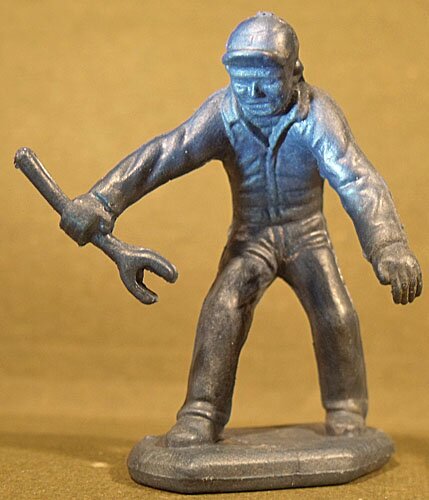 |
| 5. Pilot crouching with paper | 6. Standing with air hose | 7. Bending with wrench down |
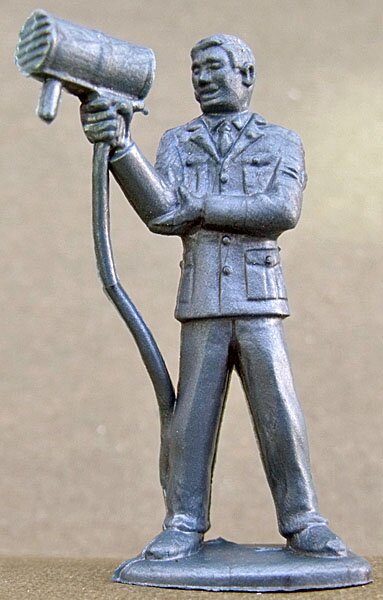 |
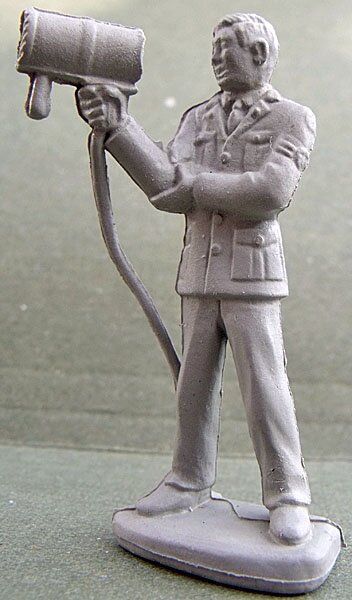 |
| 9. Standing with signal light (old base left, new base right) |
|
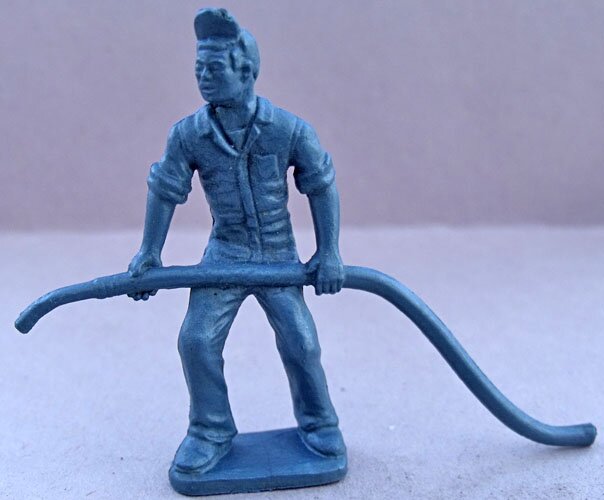 |
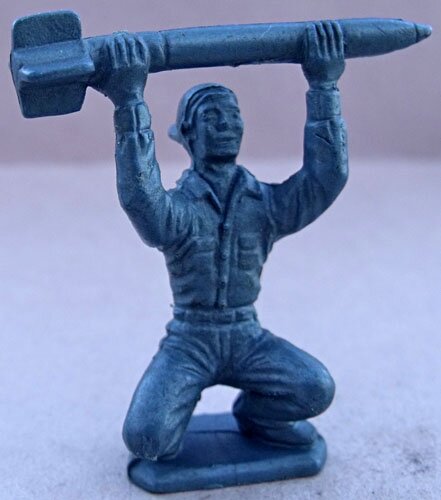 |
 |
| These three Air Force figures were not included in most Cape Canaveral sets, but at least one set did include them (#4526) | ||

Scientists and Technicians
PL-982
Marx created this group of 54mm figures as a ground crew for Cape Canaveral. The group came in a variety of colors, including metallic blue, light blue, tan, cream, and flesh. This group generally was paired with the Air Force figure group shown in the previous section.
The group originally consistedof 10 poses. In 1961, Marx added the pointing astronaut pose (Pose 1 below) to the mold. Playset Magazine Issue 37 suggests that this cream-colored figure is intended to be a character figure of U. S. astronaut Alan Sheperd. The magazine notes that when news reporters bombarded Sheperd with questions as he stepped onto the Cape Canaveral launch pad, Sheperd -- unable to speak due to his cumbersome space suit -- "simply raised his silvery gloved finger and aimed at the stars. " Hmmm, works for me... Note that the same figure was included in and fits much better in the Operation Moon Base group in the next section, where it came in silver.
 |
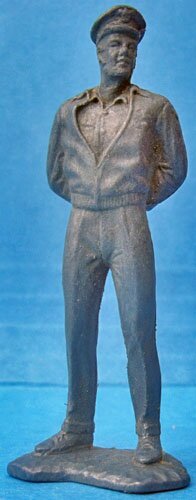 |
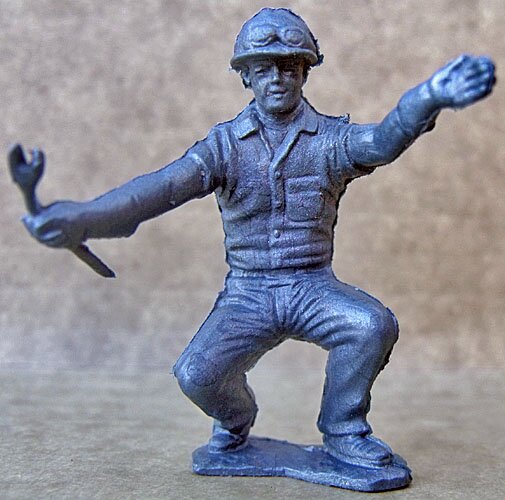 |
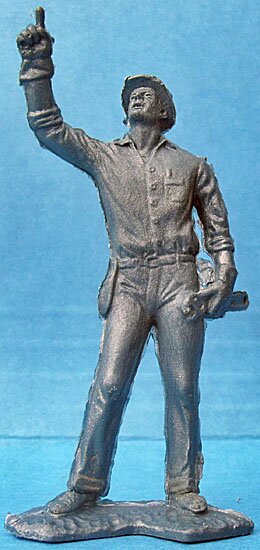 |
| 1. Astronaut standing, pointing (Not included in original mold, added two years later) |
2. Officer standing at ease in brim hat | 3. Crouching with wrench | 4. In hard hat, pointing up |
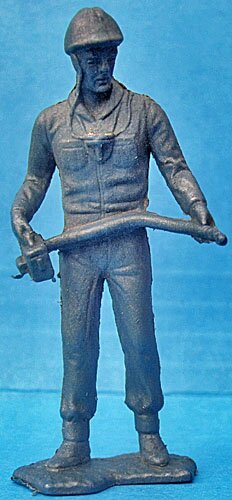 |
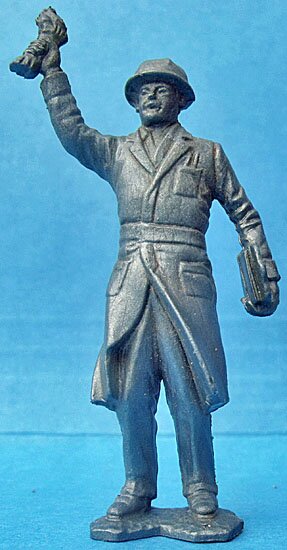 |
 |
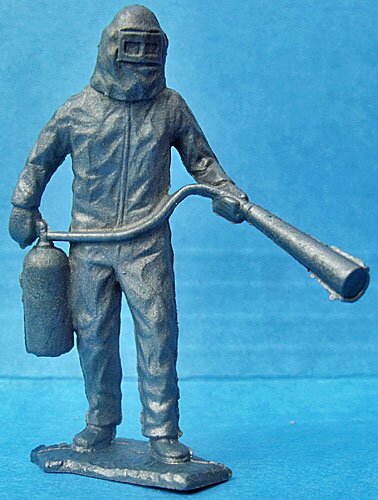 |
| 5. In hard hat with geiger counter | 6. In hard hat waving gloves | 7. In hard hat, right hand up, calling | 8. Fireman in Haz Mat suit with fire extinguisher |
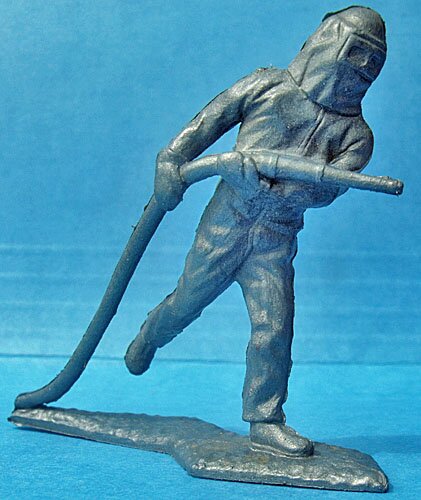 |
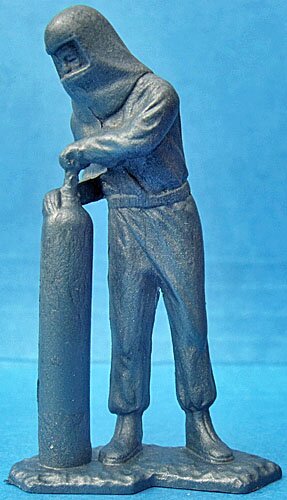 |
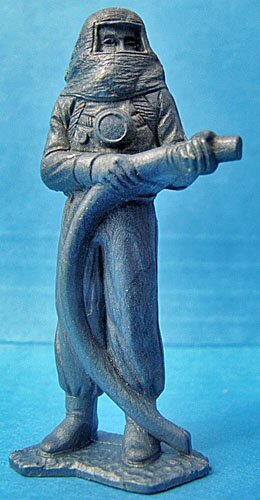 |
| 9. Fireman running with hose | 10. Fireman with CO2 cylinder | 11. Fireman with fuel hose |

| Moon Base Astronauts PL-1120 |
Although the U.S. did not have men walking on the moon until 1969, Marx jumped the gun in 1962 with a 54mm Moon Base figure group in a series of four or five Operation Moon Base playsets. Today, collecters generally identify this group as the "silver astronauts."
Seven of the nine figures had molded on helmets; two have no helmets, but are used with seperate spacesuits. Except for the two figures with seperate spacesuits, they are realistically posed and well detailed. While the removable space suits may have added some play value to the set, they look more like evil torture devices from the Middle Ages than space suits. PFPC Issue 35 states that they are reproductions of actual proposed space gear, but they look more like costumes from a 1930s space movie to me. The 2-piece suits fit snugly onto the figures, with small pegs in one half fitting into holes in the other half.
Although everyone realized by 1962 that there was no life on the moon, Marx and its Moon Base sets reverted to its standard population of the six 45mm aliens that were first made 10 years earlier. For Moon Base sets, PFPC reports they came in a waxy dark green. The little guys had been omitted from Cape Canaveral sets a year earlier. Perhaps Marx was influenced by a flurry of mail from kids who demanded aliens in their space playsets! After all, what fun are space guys if there's no one to blast with your ray gun?
As mentioned in the previous section, some collectors believe that Pose 3 below was intended to be a character figure of Alan Sheperd.
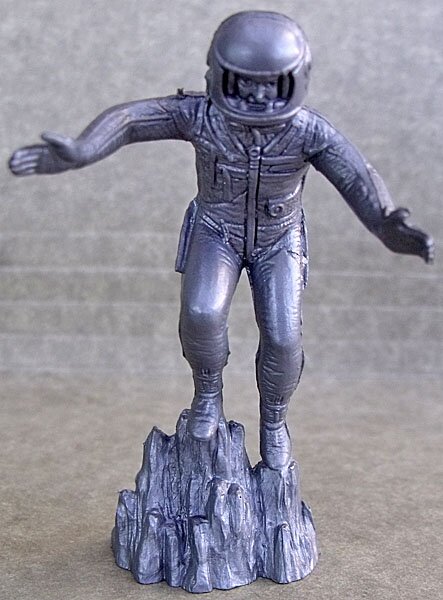 |
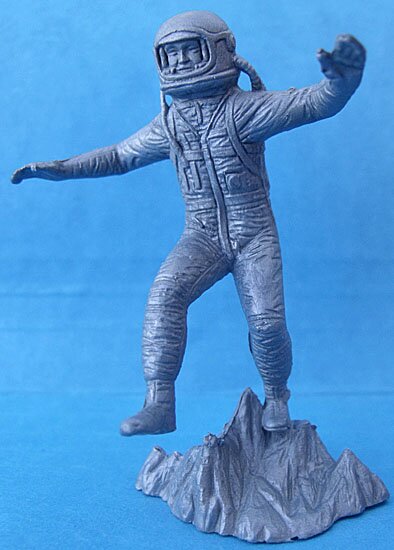 |
 |
| 1. Climbing rocks | 2. On rocks, one foot up |
3. Standing, pointing |
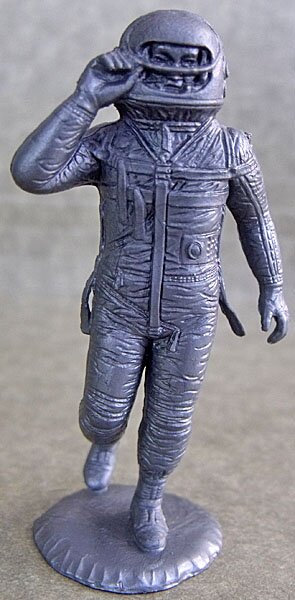 |
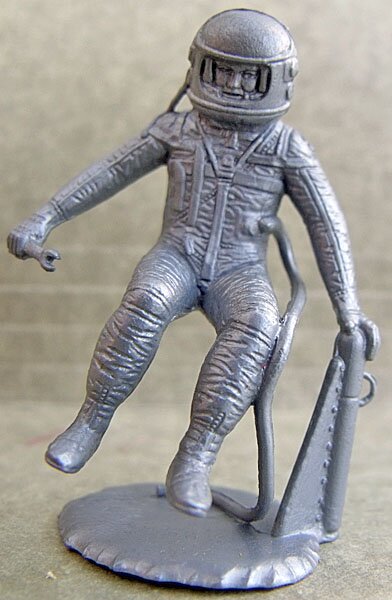 |
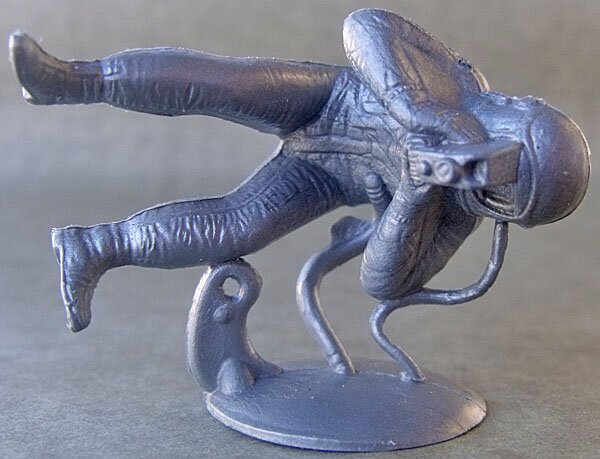 |
| 4. Walking, right hand on visor |
5. Floating in space with wrench |
6. Floating in space with camera |
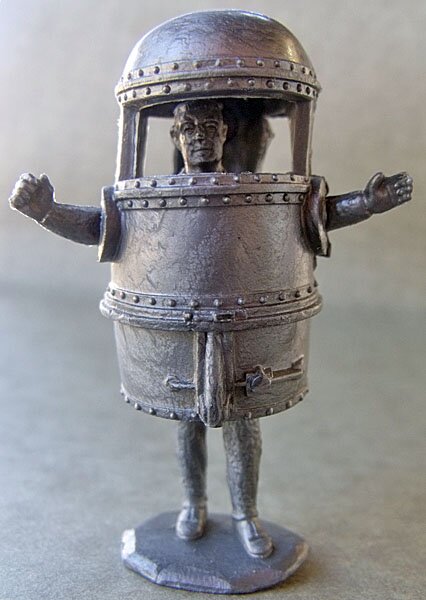 |
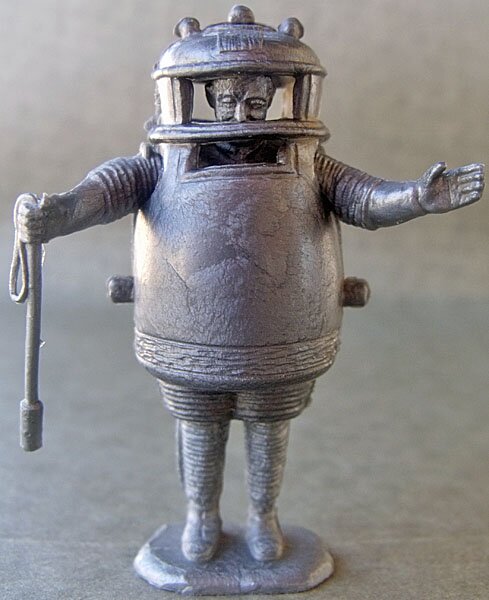 |
| 7. Arms out with separate space suit accessory |
8. Arms out with tool in right hand with separate space suit |
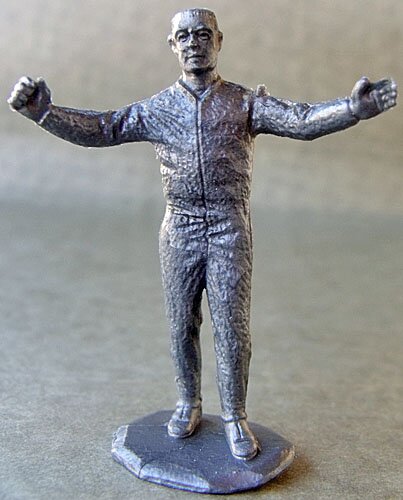 |
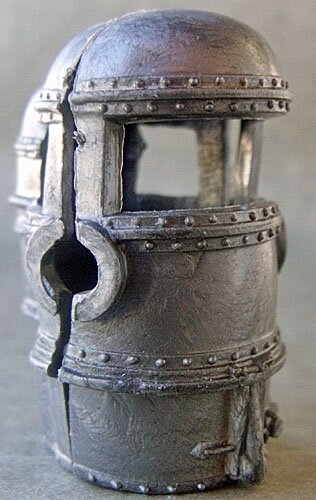 |
| Pose 7 without suit |
"Republic" Suit for Pose 7 |
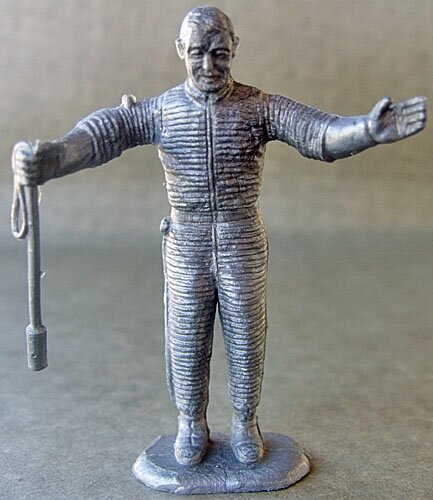 |
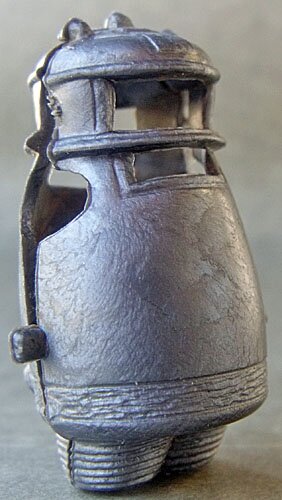 |
| Pose 8 without suit |
"Standford" Suit for Pose 8 |

| Space Capsule Astronaut PL- |
The company's Moon Base sets -- as well as its Mystery Space Ship sets (see later on this page) -- included a seated astronaut, posed to fit into the set's space capsule. The figure and capsule were found is several other later Marx space sets. Found in both a red flourescent red and silver soft plastic, the capsule parts were made in the same mold as the figure. The capsule was a good representation of the U.S.'s initial one-man capsules, but Marx never produced a rocket large enough for the capsule to fit onto.
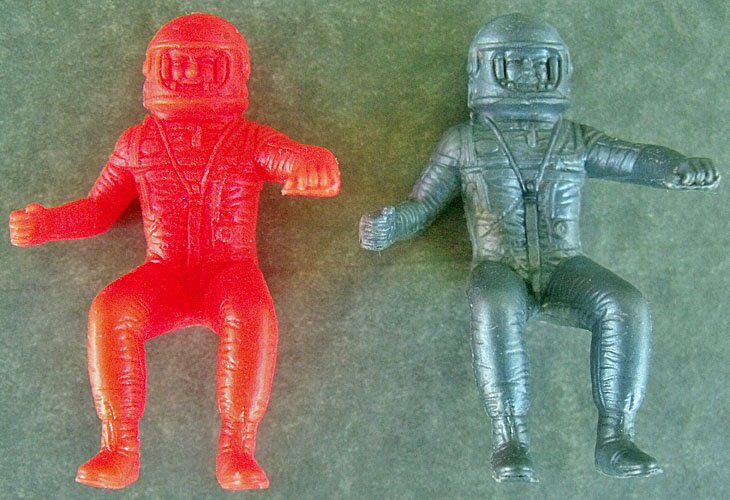 |
| Space capsule figure - translucent red and silver |

| Mystery Space Ship Astronauts and Aliens |
The unusual Mystery Space Ship Playset of 1962 (see Space Accessories page for more information) included a group of tiny 35mm figures. Astronauts were downsized versions of eight of the Moon Base figures described above, including the seated capsule figure. The two figures with removable space suits were included, but not their suits. In addition, Marx created six new alien poses, also 35mm scale.
Figures were made in soft plastic in either what PFPC Issue 56 calls a "medium grass green" or "dull orange." In each set, the aliens were generally made in one color and the astronauts in the other. As you can see, with the figures being so small and in such odd colors, my camera has difficulty taking their pictures!
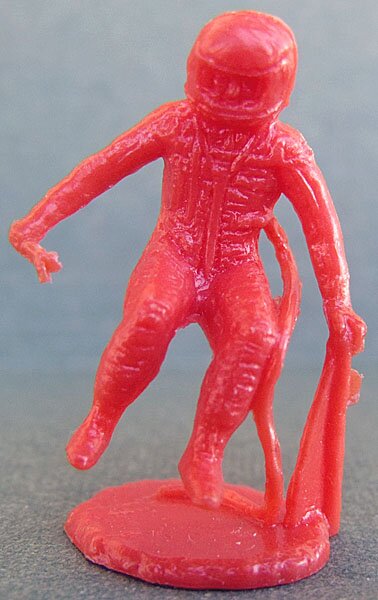 |
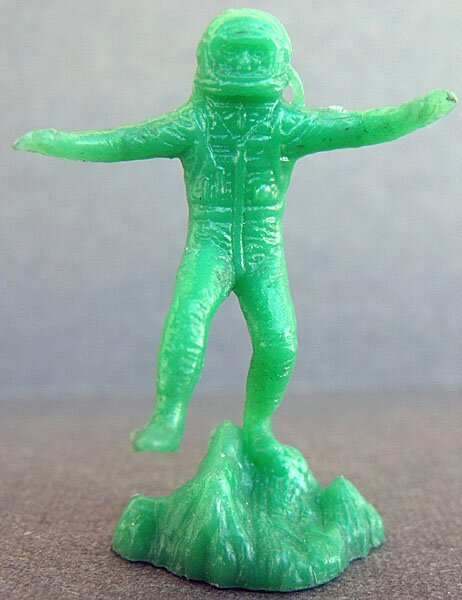 |
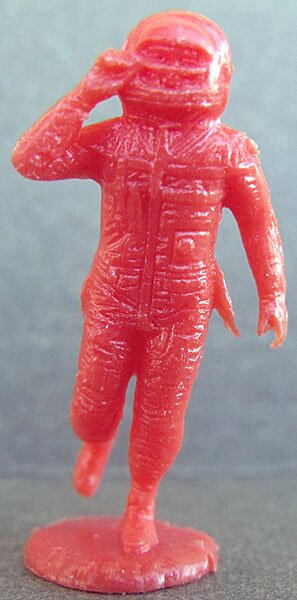 |
| 1. Space walking with wrench | 2. Walking on moon, one foot on ground |
3. Walking, hand on visor |
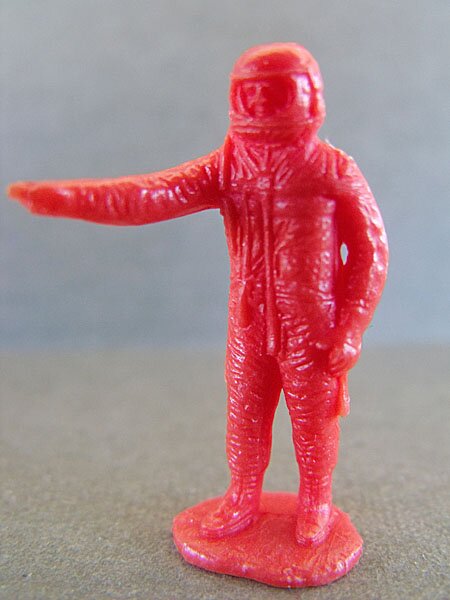 |
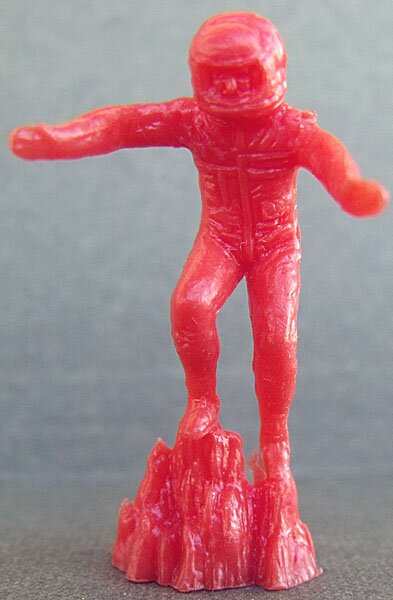 |
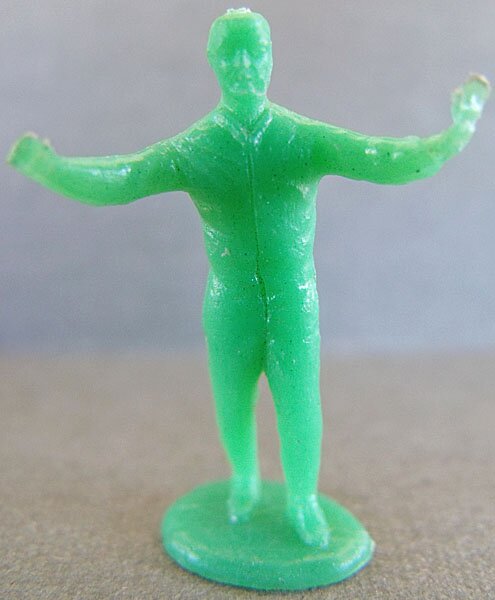 |
| 4. Standing, pointing |
5. Walking on moon, both feet on ground | 6. Holding both arms out, not wearing space suit |
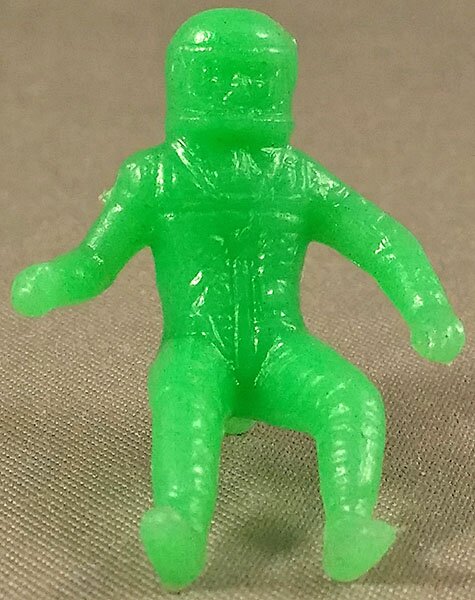 |
|
|
7. Sitting, arms out Photo courtesy of Scott Lawson, Ebay ID guitarscot4 |
8. Sitting, arms in? |
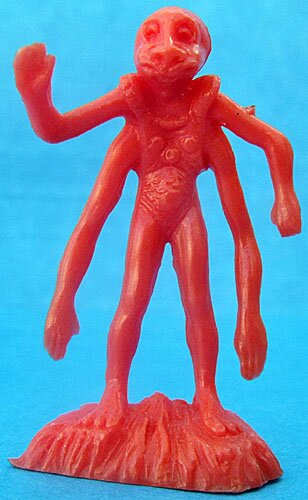 |
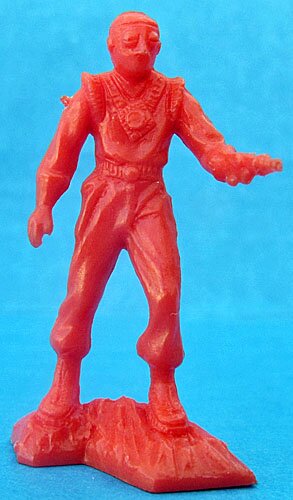 |
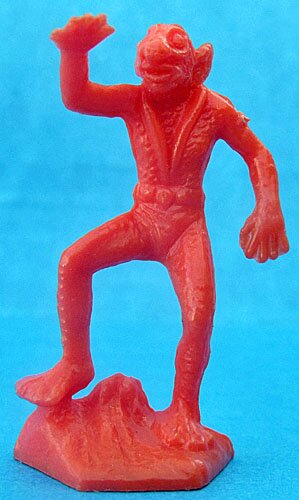 |
| 9. Alien with four arms | 10. Alien with pistol in left hand | 11. Alien with right arm up, pointed ears |
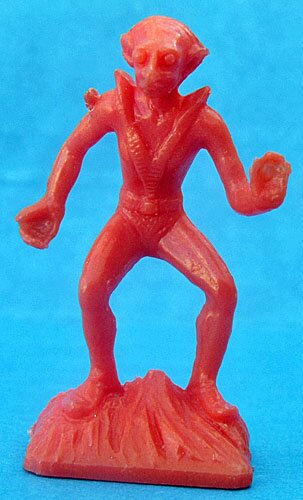 |
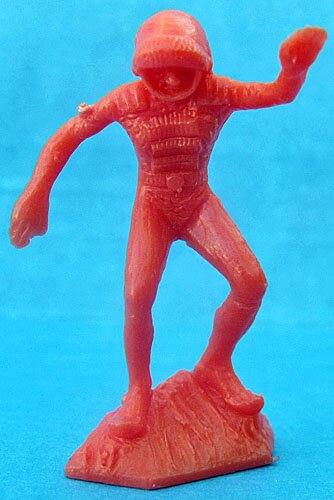 |
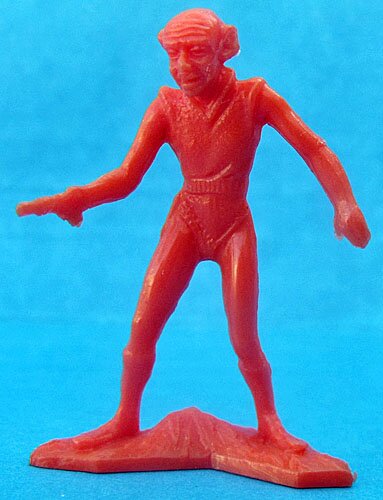 |
| 12. Alien with pointed face, right arm up | 13. Alien with helmet, left arm up | 14. Alien with pistol in right hand |
